A tidy example of the early postwar modernism that characterized commercial architecture in Chicago’s outermost neighborhoods, 3200 W. Foster’s big glass windows once turned the showroom into a silent, ceaseless salesman. The building, designed by Melvin A. Nelson and completed in 1949, is in better shape than the discontinued car brands that it initially sold…but only barely. Owned by North Park University and long home to the campus bookstore, the former DeSoto-Plymouth dealership has been vacant since 2006.

So, what’s changed? Those showcase windows are gone and a shingled eave engulfed the clean lines of that metal canopy. The sign is gone, if it existed at all (I can’t spot it in contemporary aerial photos and have a hunch it was a speculative addition for the postcard). As usual, we have streetcar tracks that have disappeared–the Chicago Surface Lines’ route 17 went from Bryn Mawr & Kedzie to Marquette & Kedzie until it was replaced by buses in 1949, with the tracks paved over soon after. North Kedzie doesn’t even have bus service anymore, after the CTA ended the 89 bus in the early 90s. That stone veneer facade still looks pretty good, though.
Established in the late 1930s, M&C Motors spent most of the 1940s down the block at 5129 N. Kedzie before moving here, at the intersection of Kedzie and Foster, in 1949. The dealership sold two Chrysler marques, with Plymouth Chrysler’s entry-level brand and DeSoto a midrange brand initially conceived to compete with Pontiac, Studebaker, Dodge, etc. The DeSoto brand became redundant almost immediately when–only months after launching the division–Chrysler went ahead and acquired Dodge. With too much overlap between Chrysler’s five brands–Plymouth, Dodge, DeSoto, Chrysler and Imperial–the company discontinued the DeSoto line in 1961. By that point M&C Motors had moved to Oak Park anyway, where the company survived into the early 2000s.
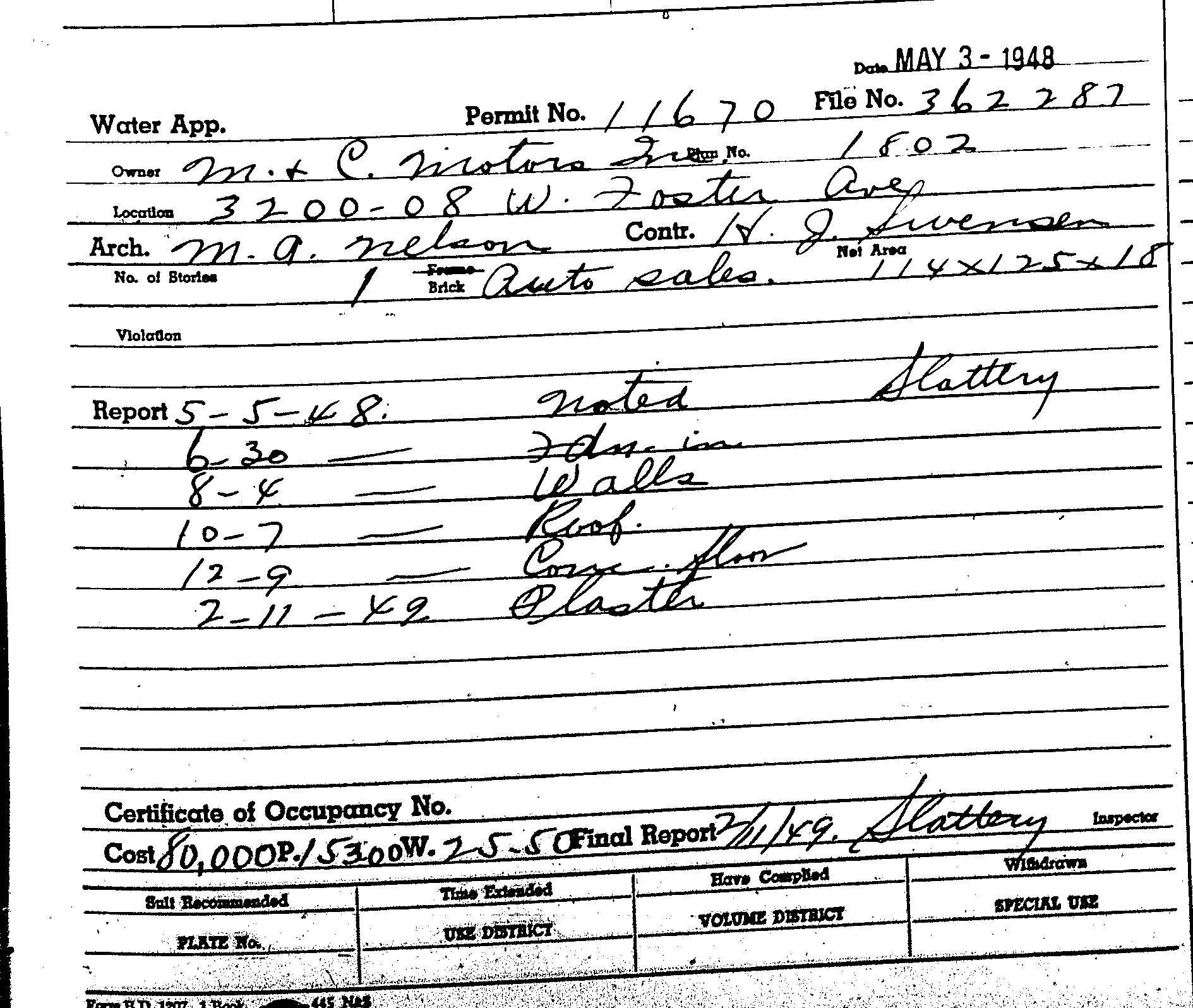
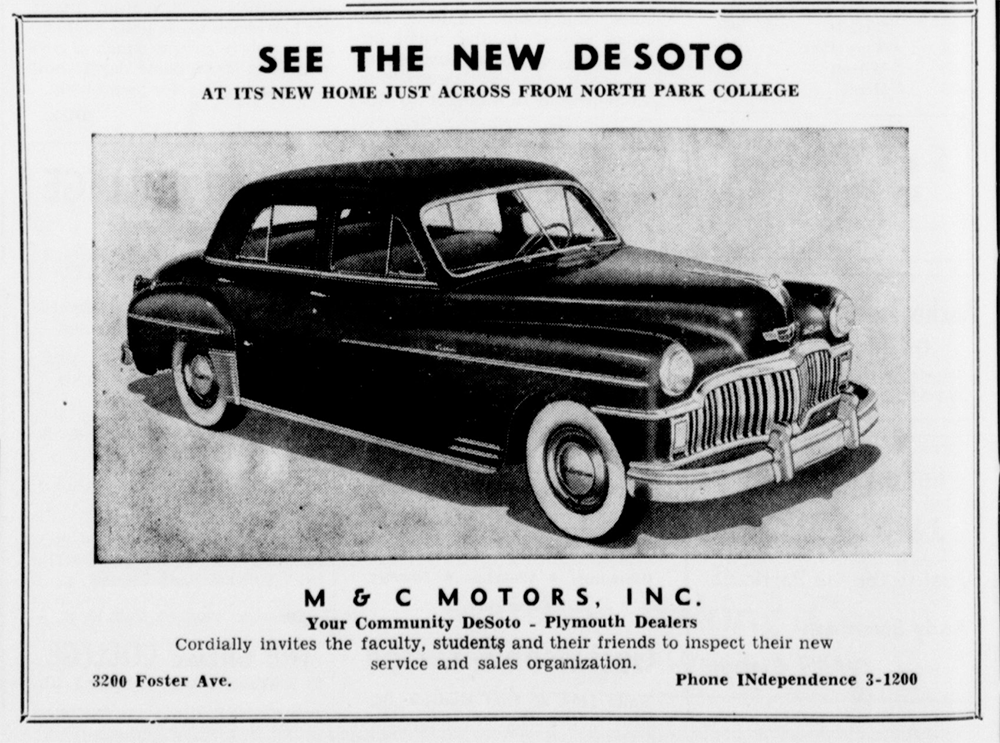
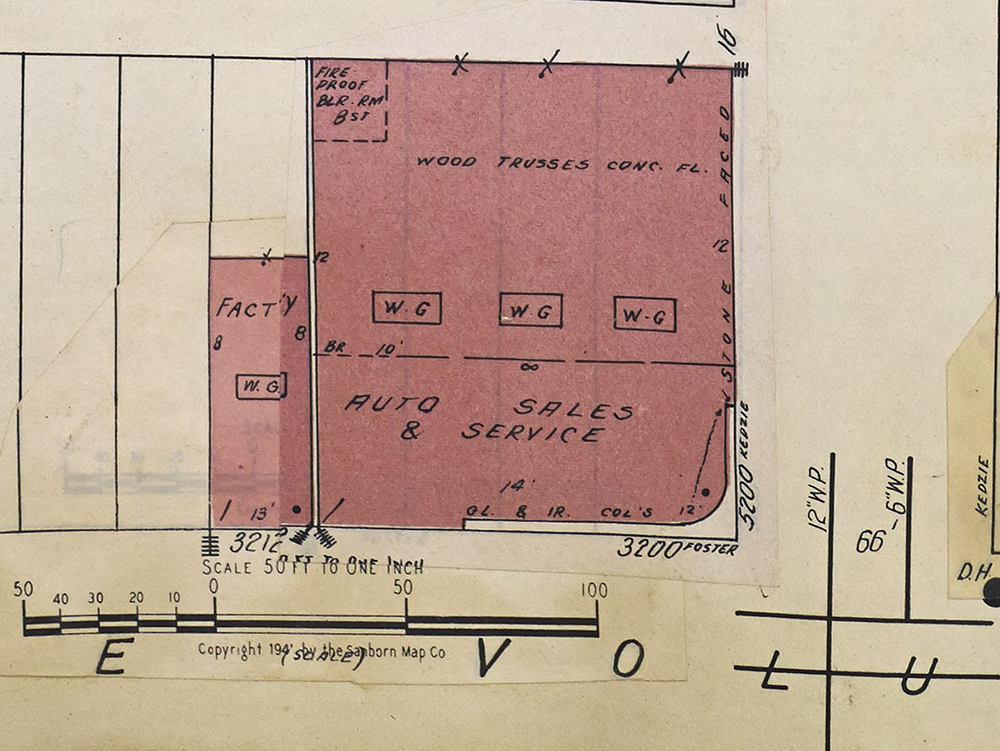
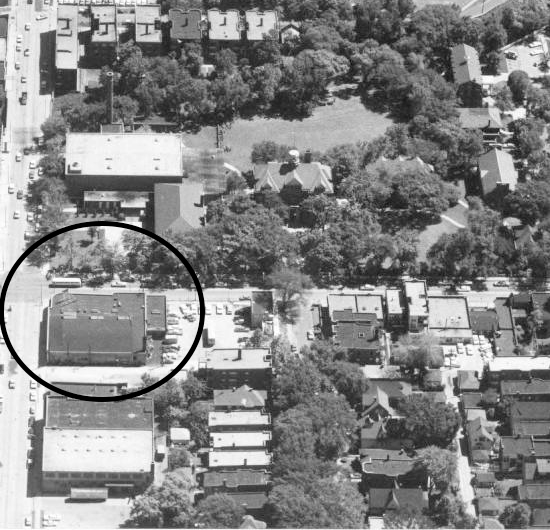
1948 building permit, Chicago Building Permits Collection, UIC | 1949 ad for the new location, North Park College News, F.M. Johnson Archives and Special Collections at North Park University | 1950 Sanborn Map | 1960 aerial, CAHL_24225, North Park University
With car sales flowing again after the war, a growing M&C Motors hired Melvin A. Nelson to design their new showroom and service center. Nelson was an obscure Chicago architect (...you don’t want to know how long it took me to identify him), but in the 1920s he had worked for Clarence Hatzfeld’s firm, which designed some notable Masonic temples and park district fieldhouses across Chicago. Active through the late 1950s, Nelson designed some neat single-family homes on the North Side, a clutch of commercial buildings, and at least one church. If I had to guess, as someone beginning to establish themselves in the field in the 1920s, the Great Depression probably seriously derailed his career in the 1930s–but that lean period also appears to have forced him to vault from various historical revival styles to modernism once building re-started after the war. Given that North Park University is a historically Swedish school, it’s also a little appropriate that they own this building now–Melvin Nelson was born to Swedish immigrants who lived on Chicago’s North Side.
Kenron Awning & Window Co., a manufacturer of aluminum storm windows, doors, and fiberglass awnings, briefly took over the building when M&C left, but by the mid-1960s they moved to a facility in Niles, which consolidated their manufacturing and corporate offices (6565 W. Howard–it’s still there).
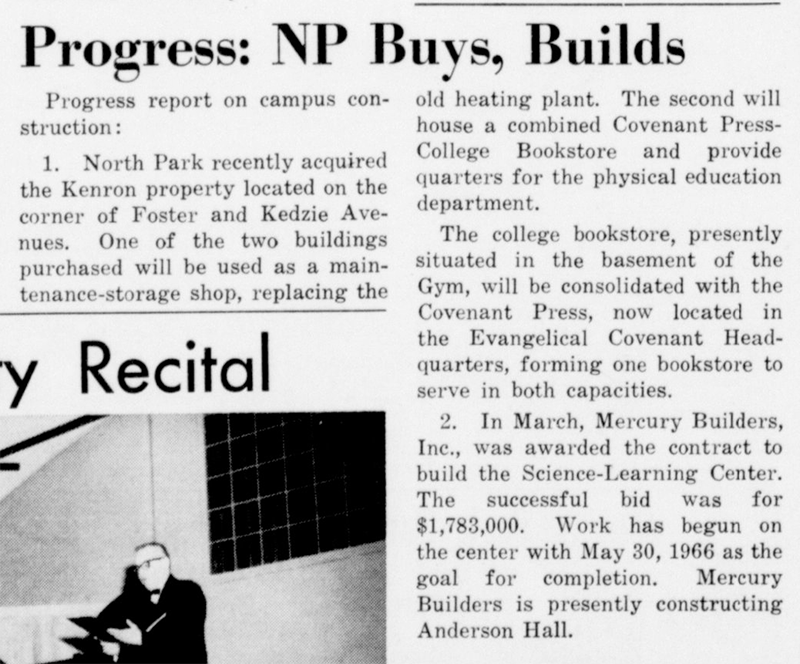
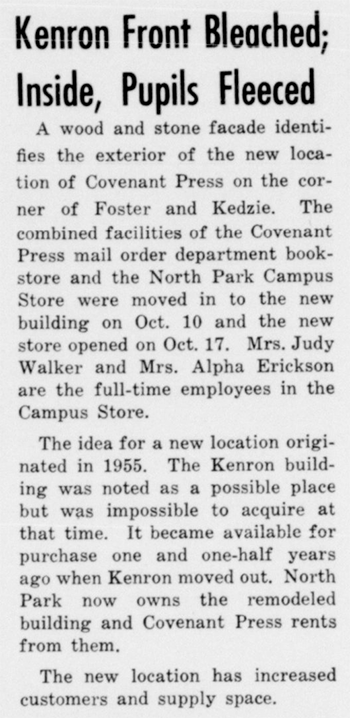
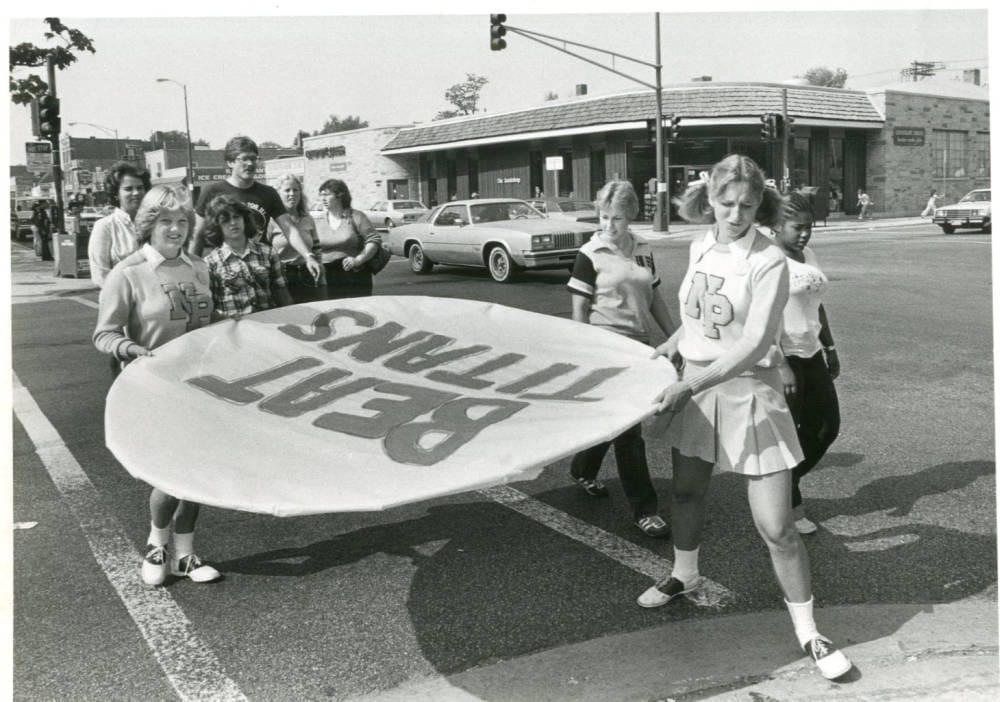
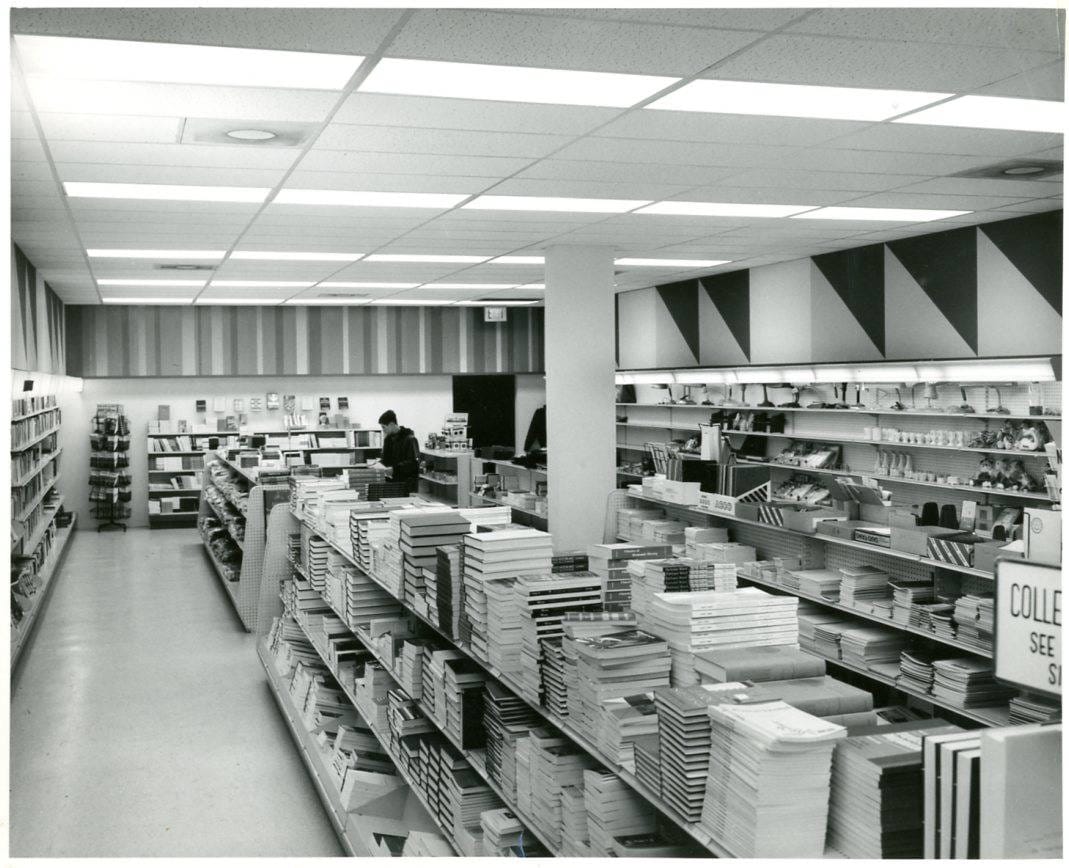
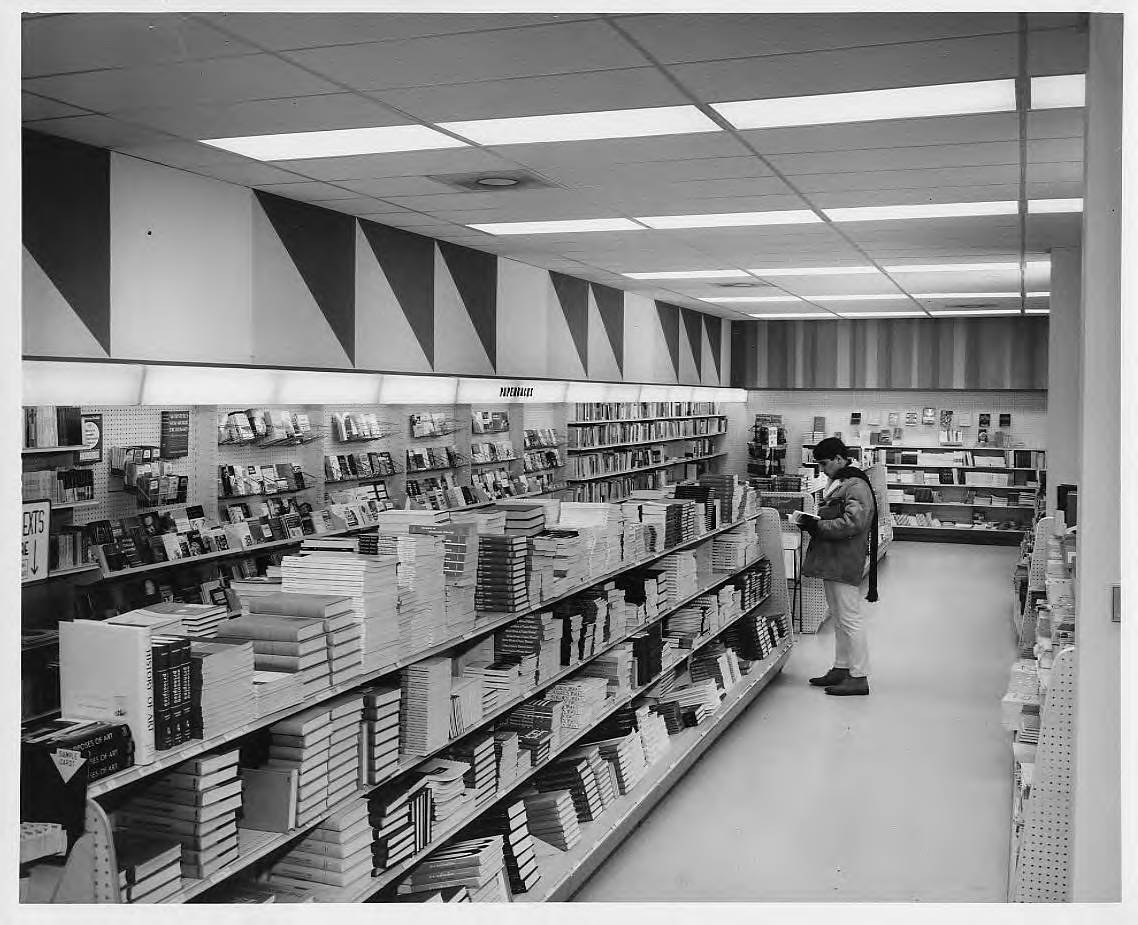
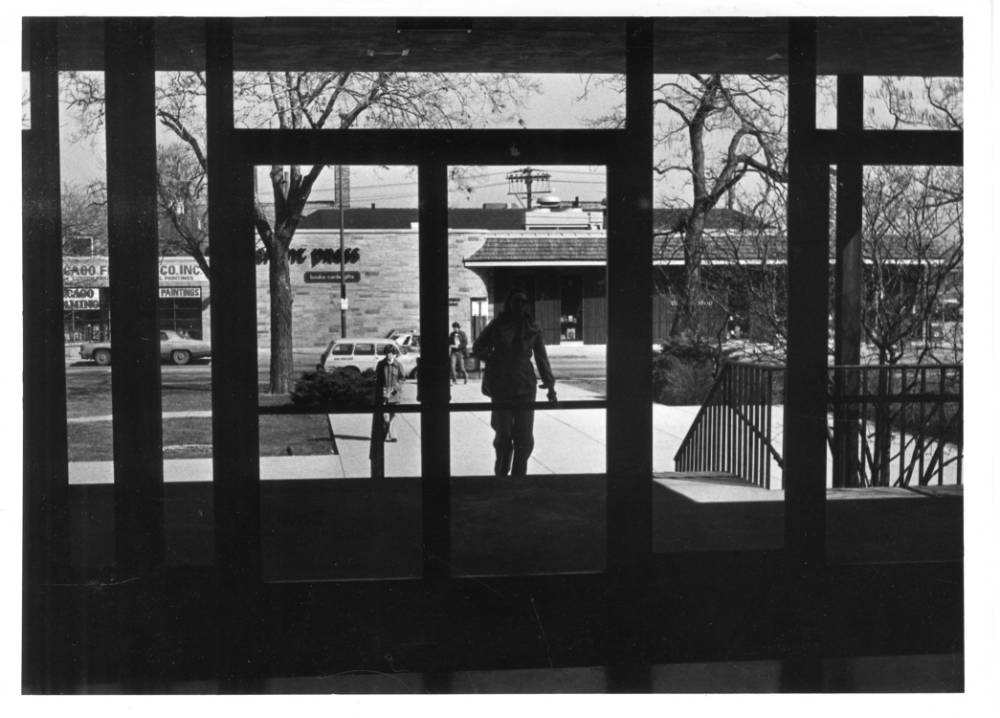
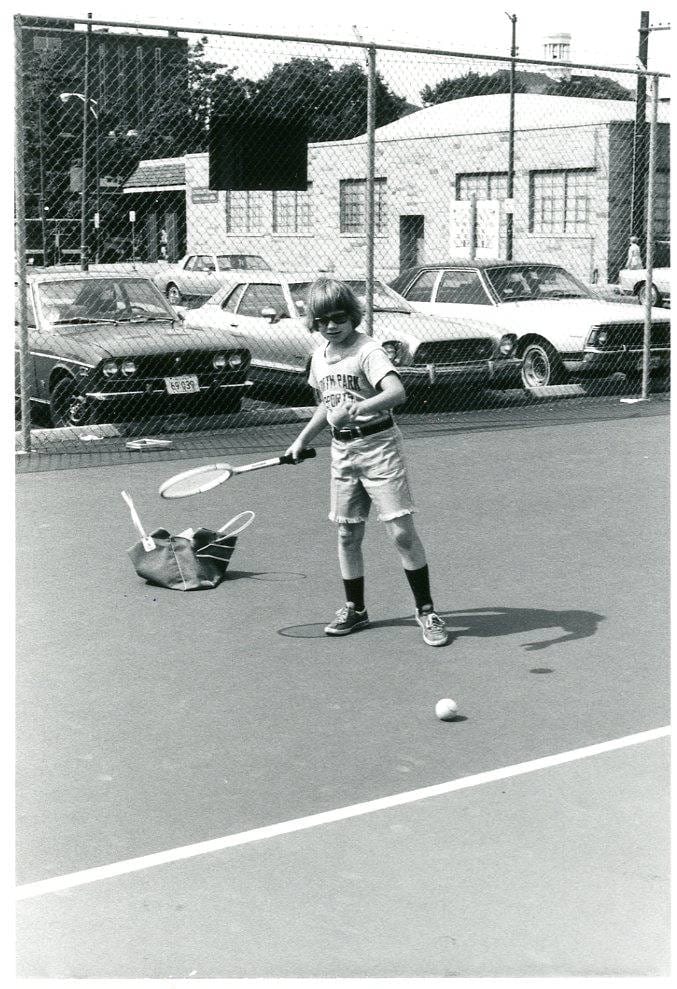
1965 and 1966 articles in the North Park College News | 1979-1980 photo with cheerleaders, Dom Najolia, CAHL_21229, Covenant Archives and Historical Library at North Park University | Campus bookstore interior, 1970, CAHL_04646, North Park University | Campus bookstore interior, 1970, CAHL_04647, North Park University | 1975, CAHL_14676, North Park University | 1978, tennis camp, CAHL_06663, North Park University
In 1965, North Park College bought the building, leasing it out to Covenant Press, an Evangelical Covenant Church publisher who also operated the college bookstore out of the building. By 1970, the showcase windows of the old auto showroom had been replaced with…whatever that shit is. From here, Covenant Press published religious texts, distributed videos, and also ran a Christian record label from this building. The Covenant Bookstore closed in 2006, when the university moved it back onto campus.
Since it’s a religious institution, North Park University pays no property tax here, which makes it much easier to justify banking this lot by keeping the building vacant. At least at one point, the school planned to demolish this building, but North Park's most recent masterplan no longer marks it for demolition, so we'll see what happens. Peterson Avenue, a mile north, has received a lot of attention for its delightful midcentury architecture. While its sharp lines are a little tattered these days, 3200 W. Foster was once an outpost of that same architectural heritage.
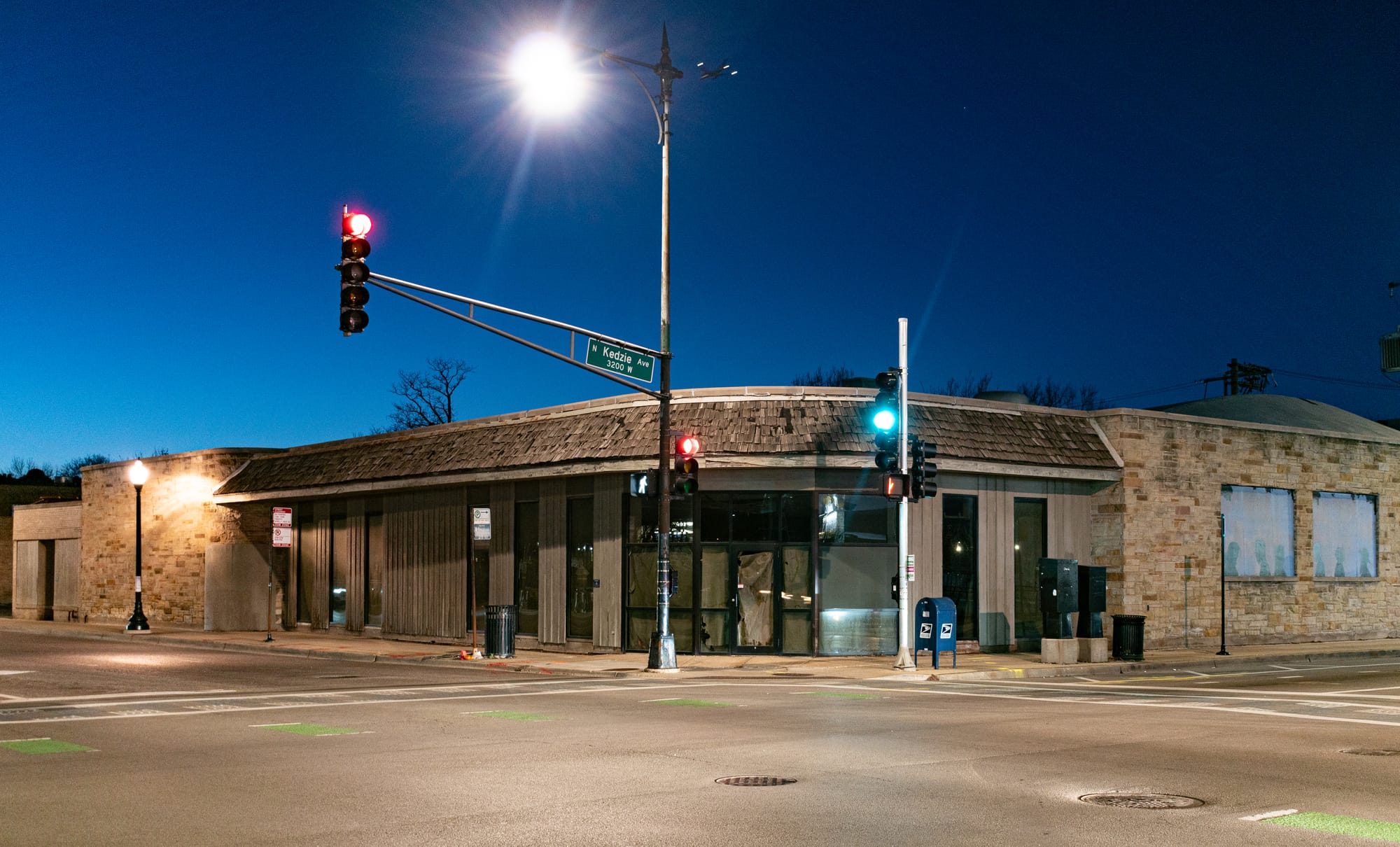
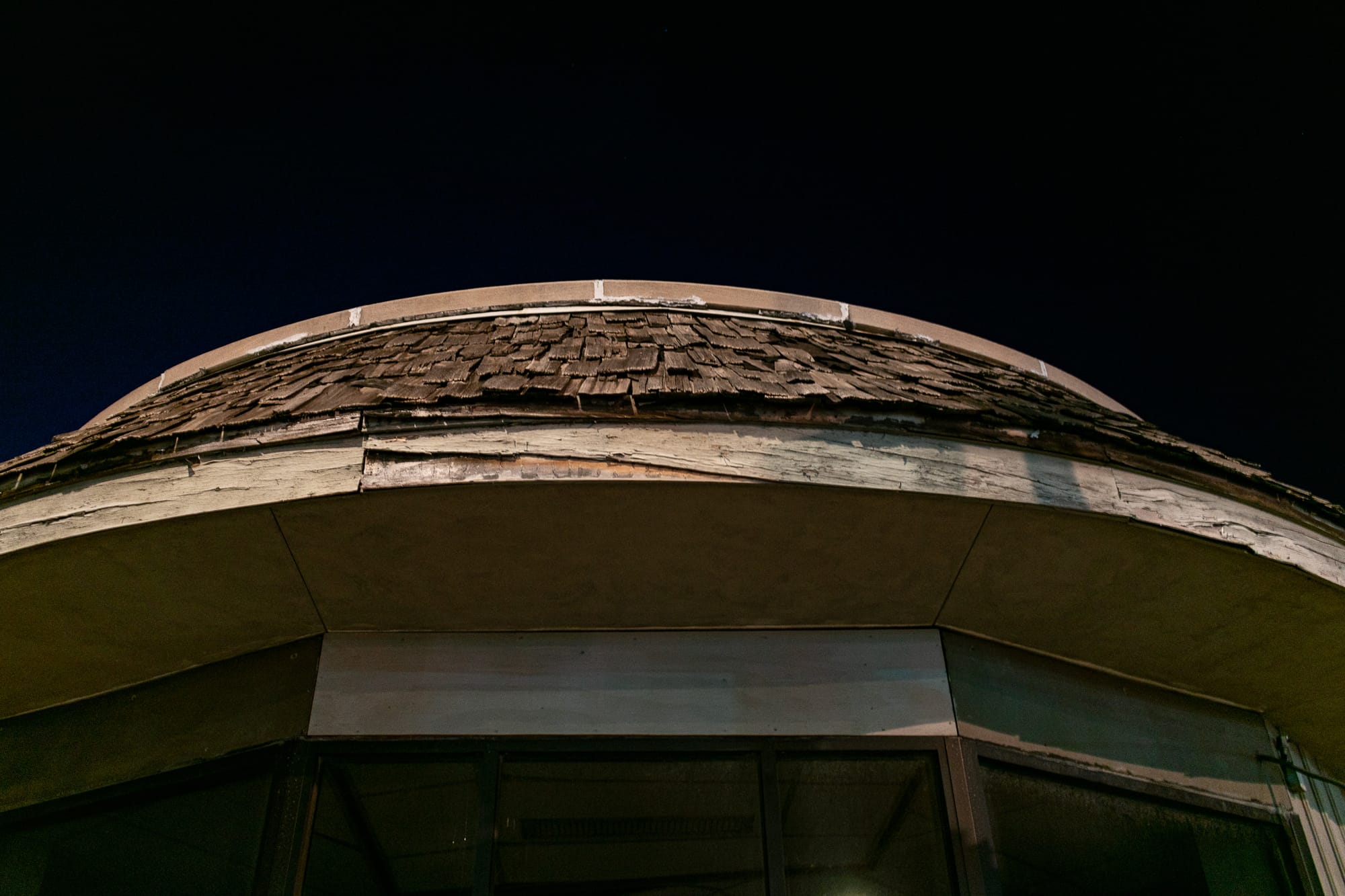
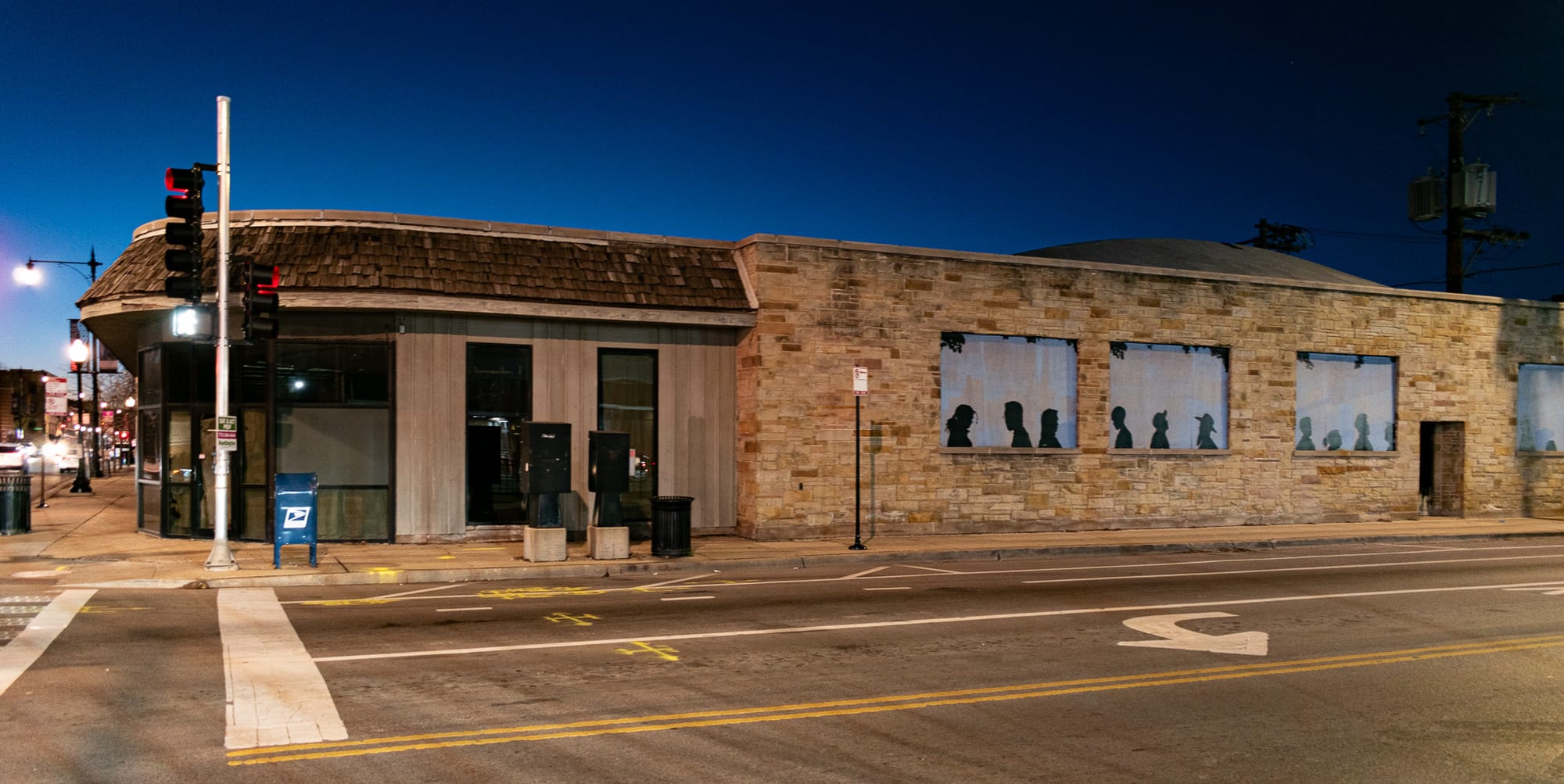
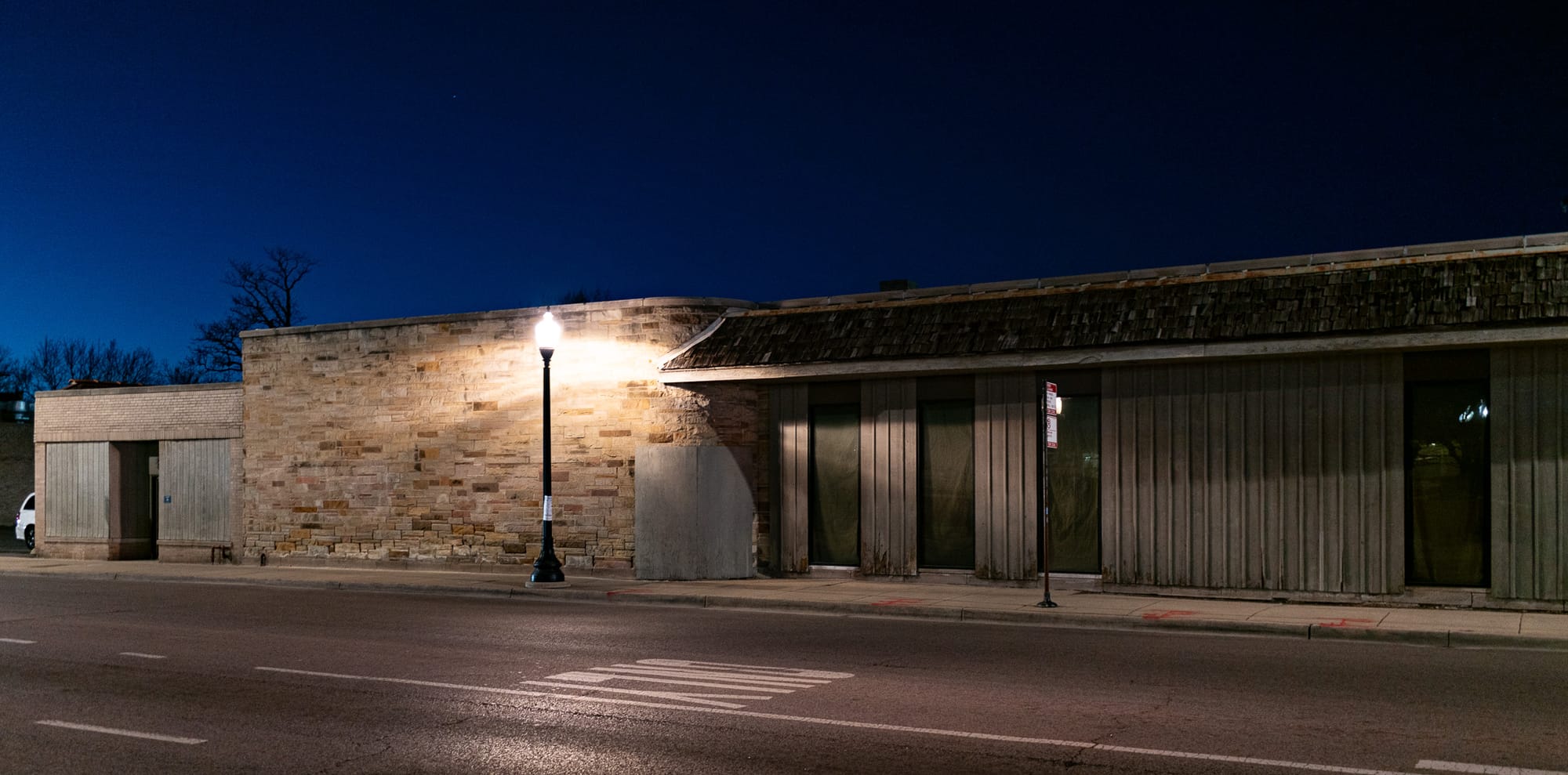
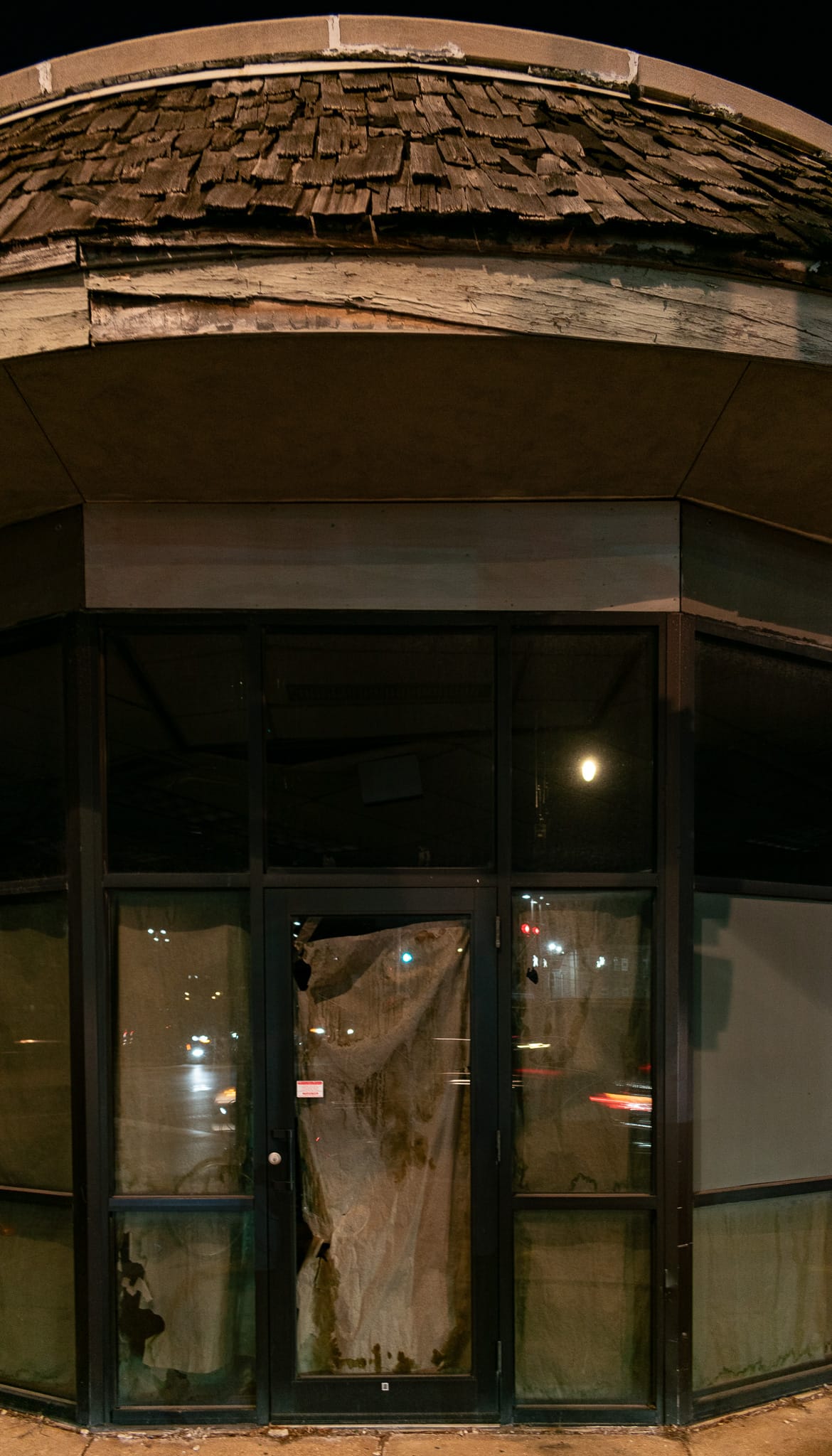
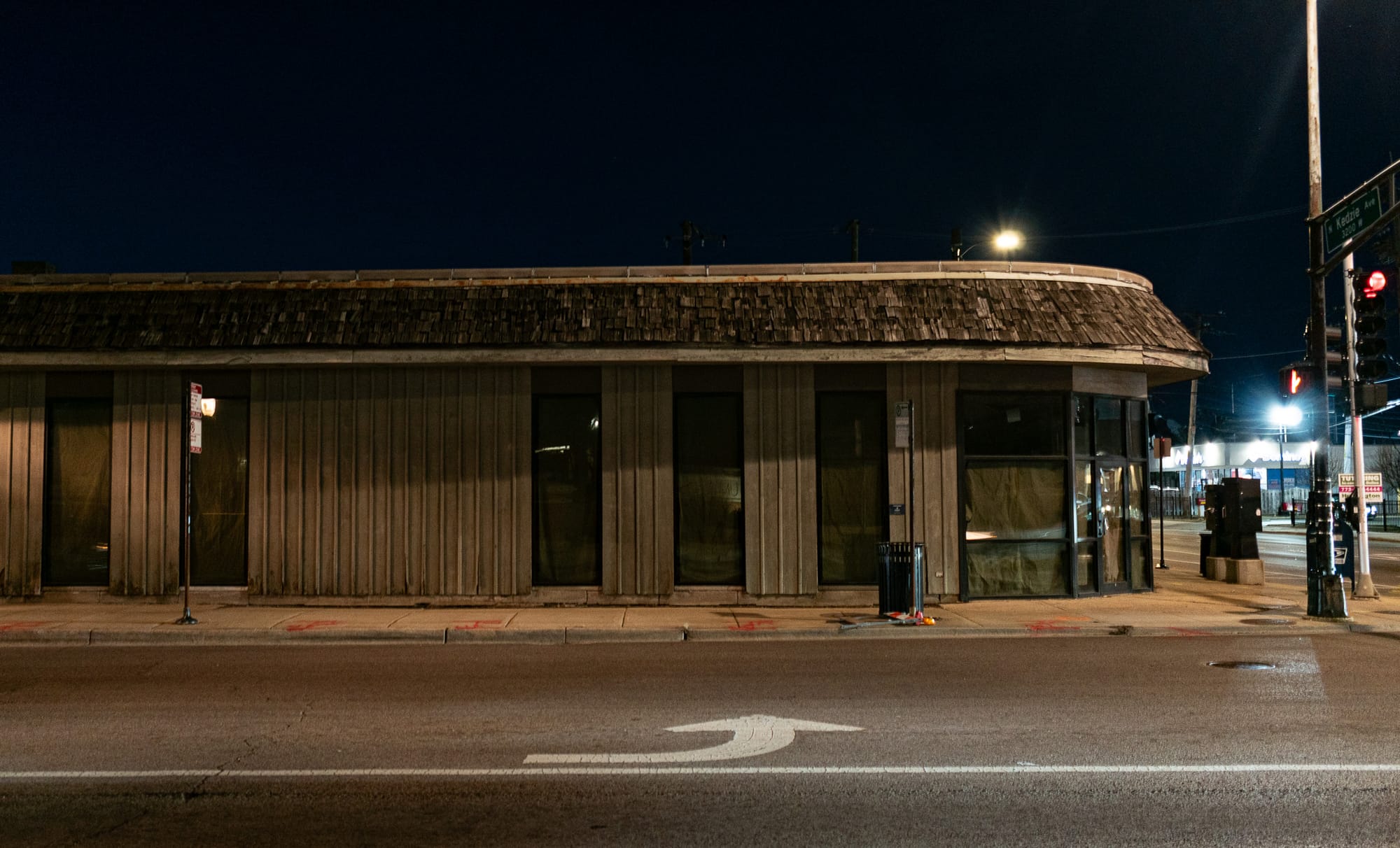
Production Files
Further reading:
- The Makes that Didn't Make It, "the Story of the DeSoto"
- Seeds That Could Grow: The Evolving Campus of North Park University
- CDOT and DPD Commercial Corridors Study North Park
- "An Auto-Biography: The Significance of Mid-Century Automobile Showrooms in Virginia" by Ashlen Stump–this master's thesis on the architecture of midcentury auto showrooms was helpful
- The F. M. Johnson Archives and Special Collections at North Park University
- Raymond E. Trafelet vs. M&C Motors, Inc., Charles and John Ugaste, Blue Cab Company, and Safety Maintenance and Sales Company
- CTA Surface System History presented by the Illinois Railway Museum
Other buildings designed by Melvin A. Nelson include Kelvyn Park Presbyterian Church (Deming Place & Kostner), Northwest Suburban Medical Center (Thomas & Arlington Heights Road in Arlington Heights), Portage Park Gym, and the Locomobile-Auburn Auto Showroom (2401 S Michigan). He also designed homes and apartments in Chicago at 3007 W. Hollywood, 5755 N Virginia, 1350 W. Elmdale, 6133 N Forest Glen Ave., and 6131 N. Kirkwood Ave.
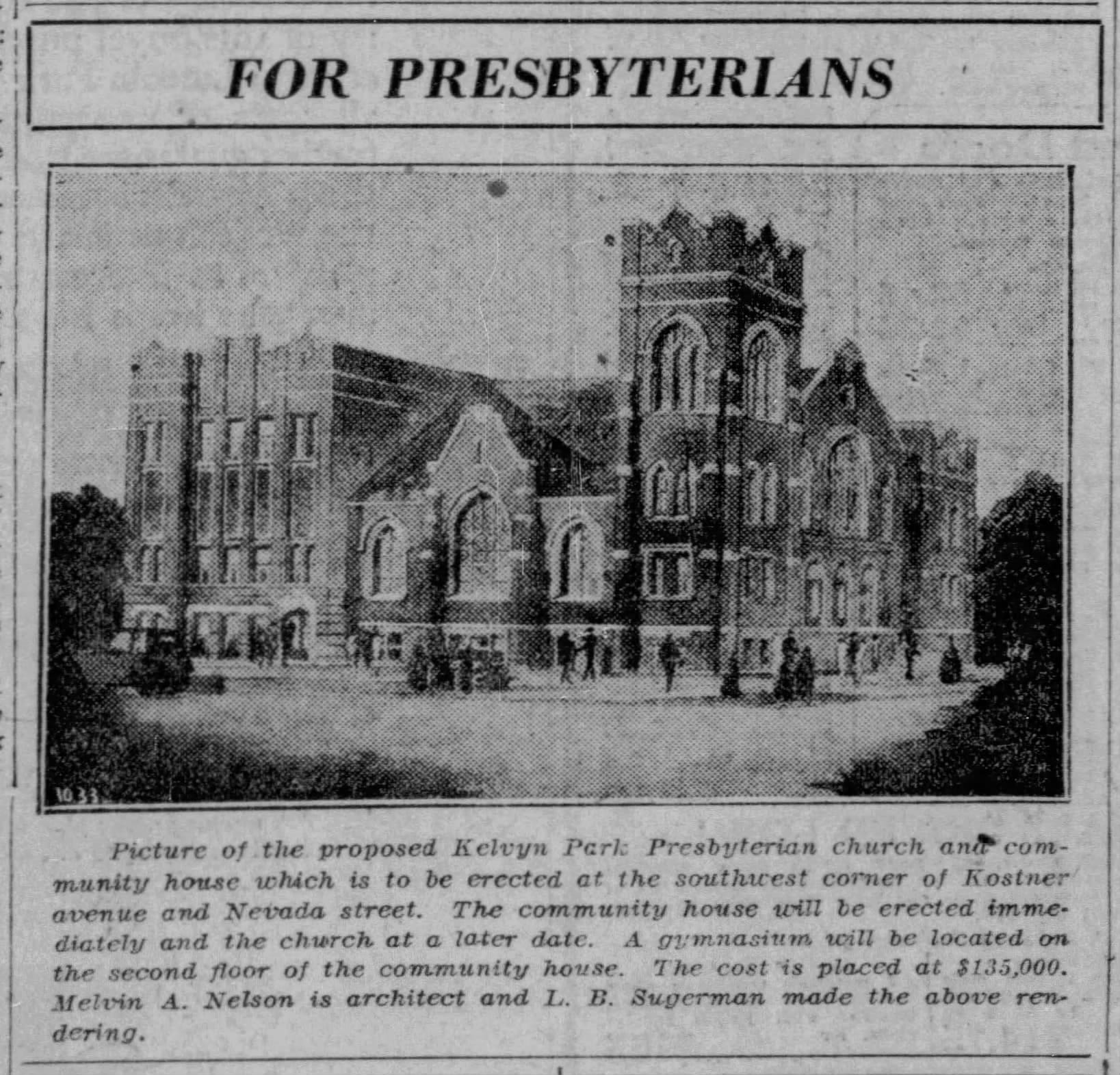
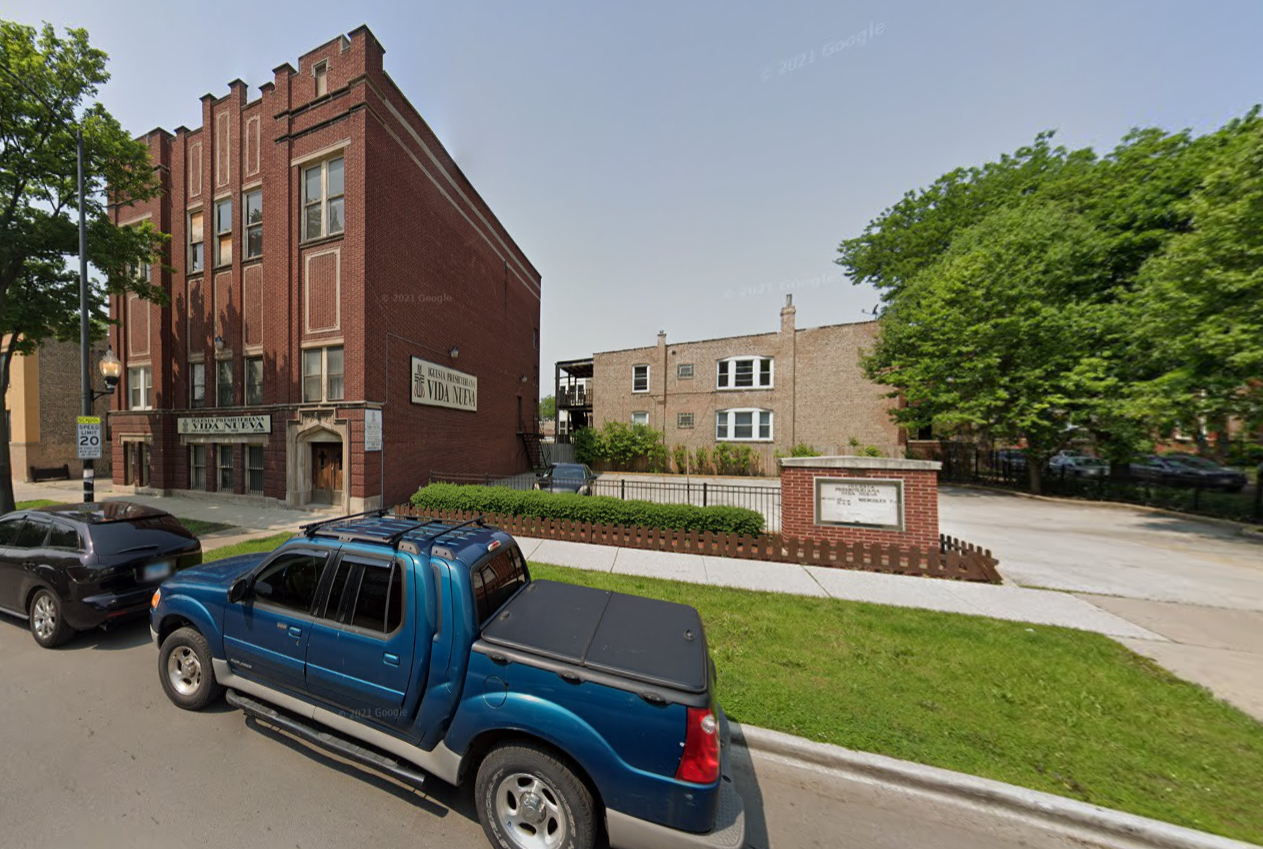
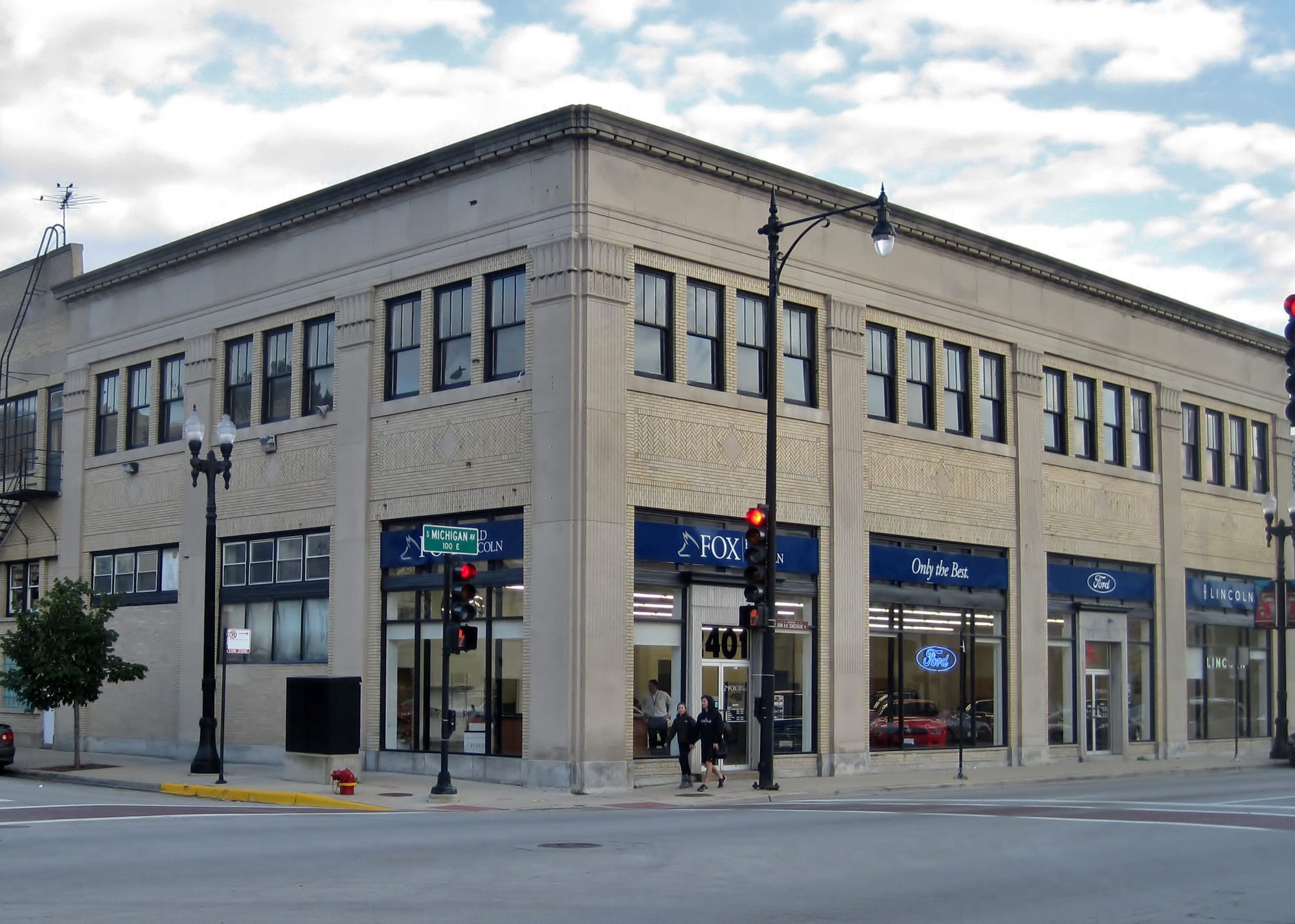
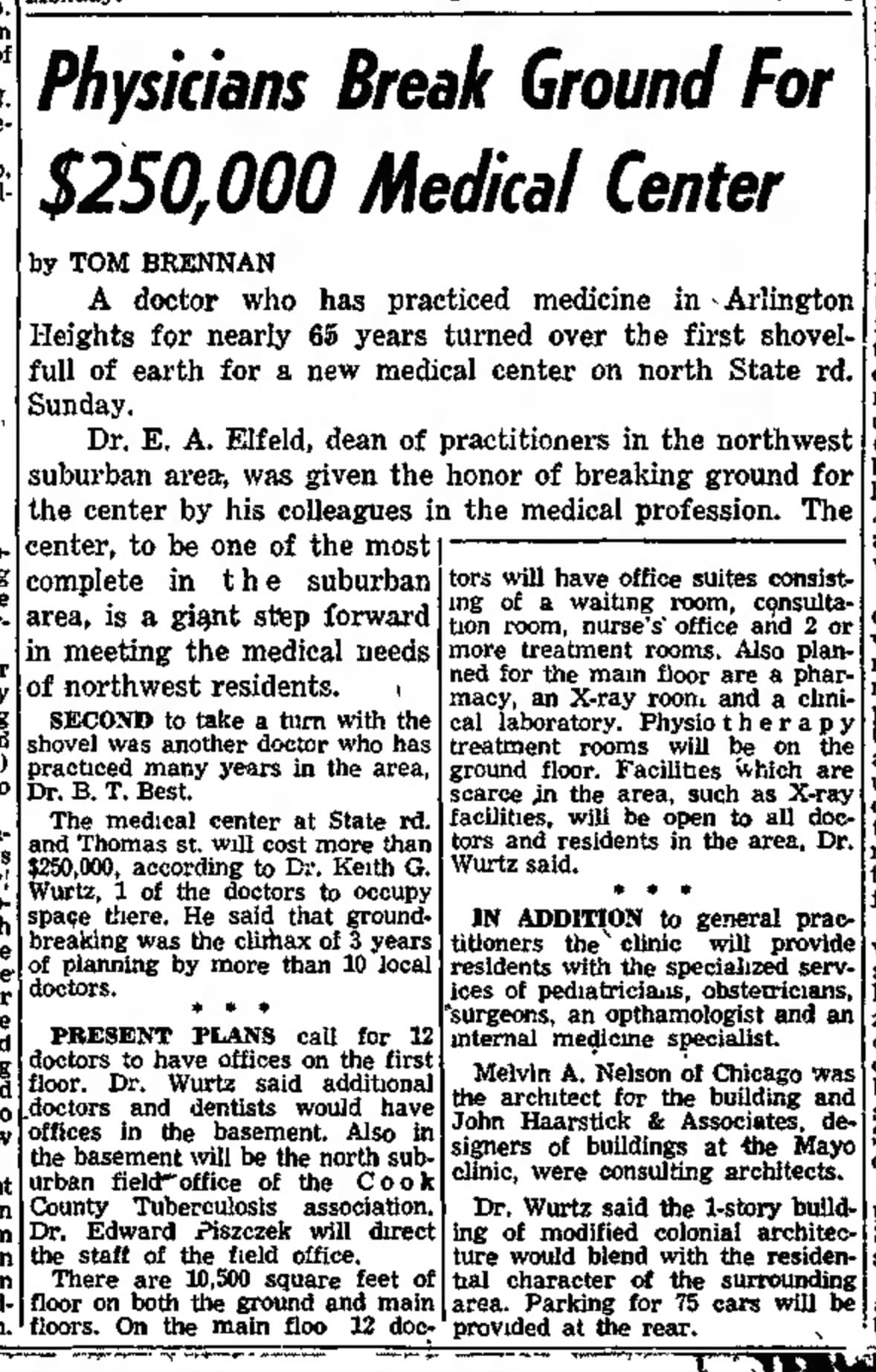
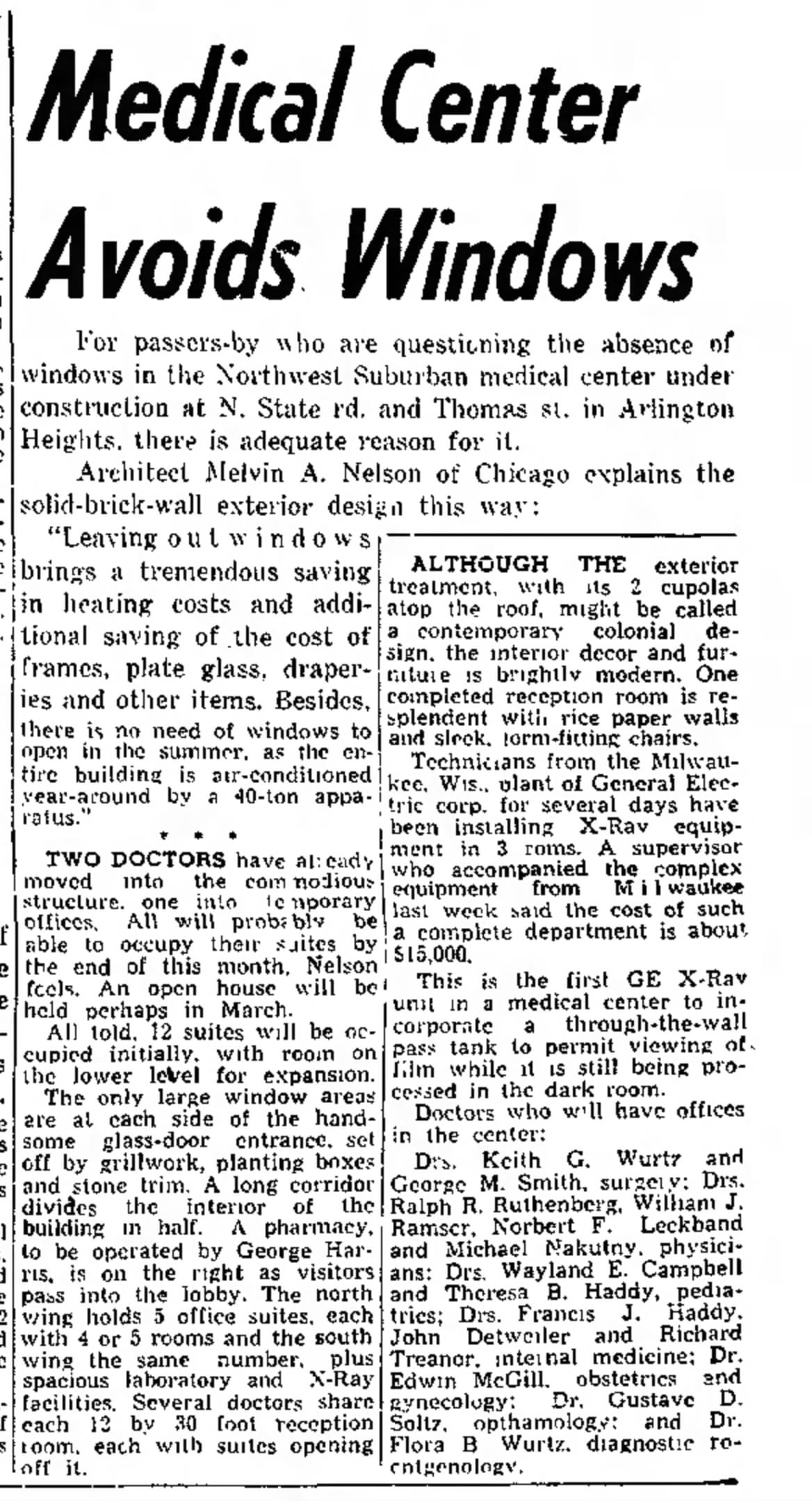
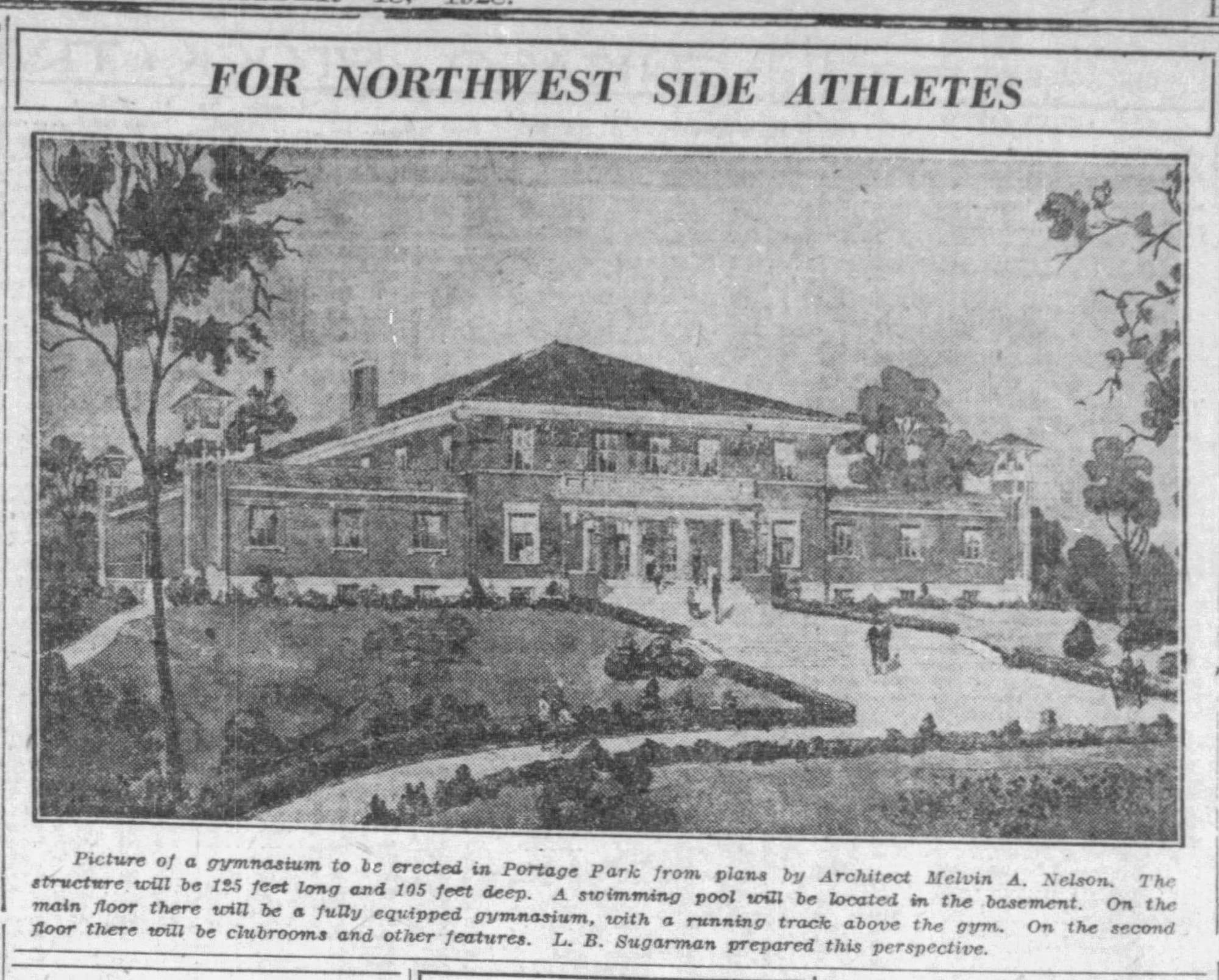
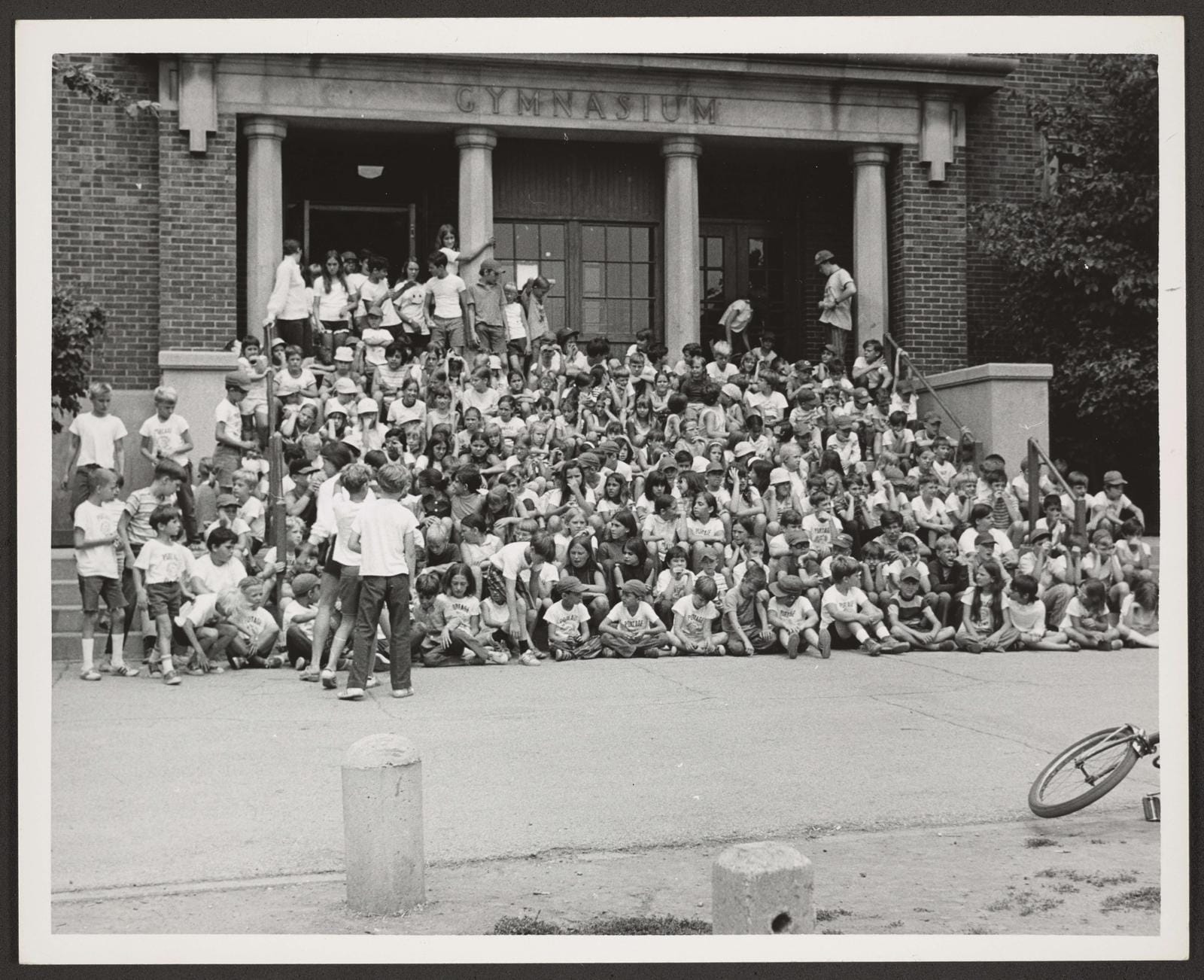
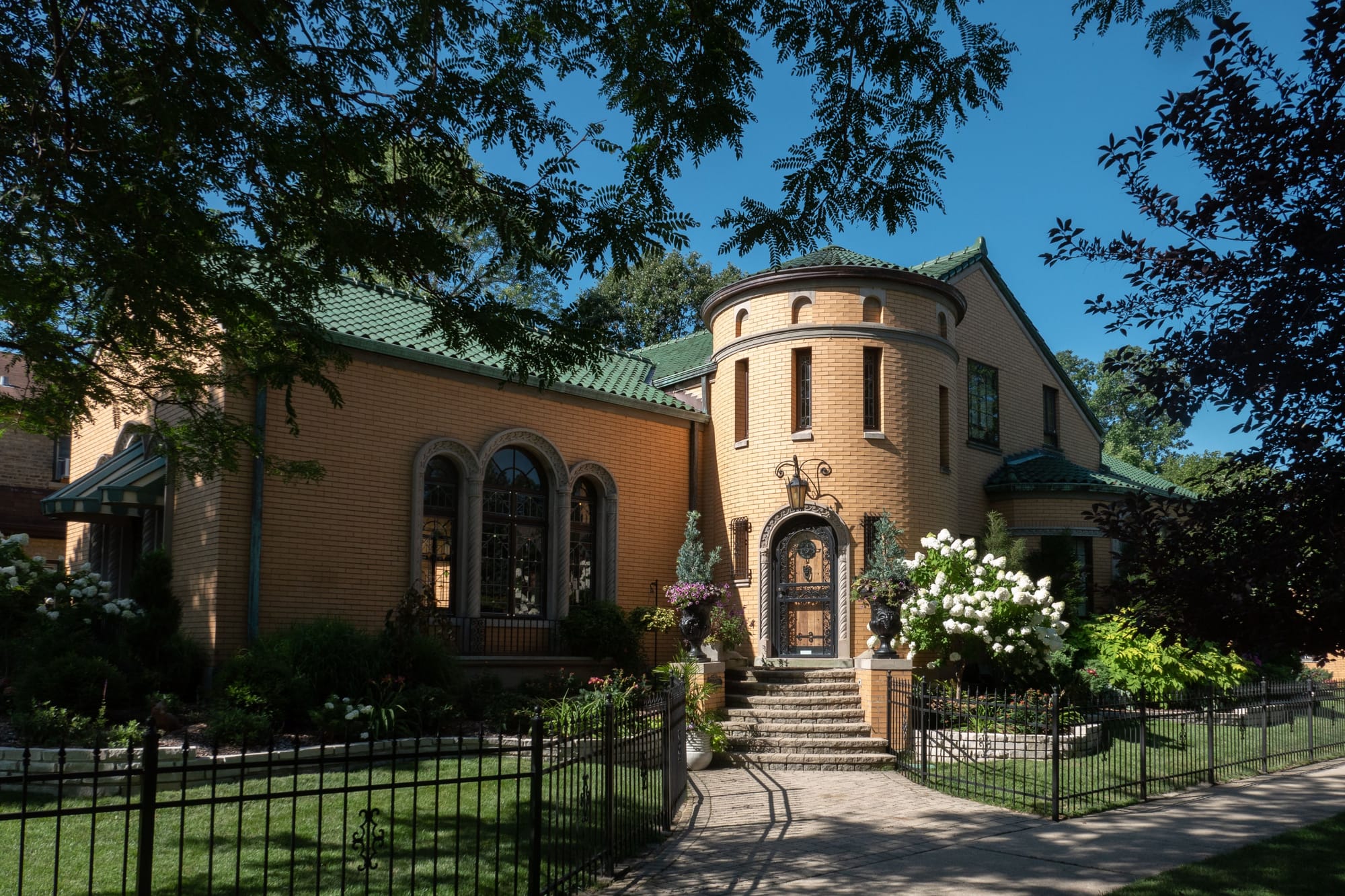
M.A. Nelson designs Kelvyn Park Presbyterian Church, 1927 | The former Kelvyn Park Presbyterian Church, Google Streetview | Locomobile-Auburn Showroom on Michigan Avenue, designed by M.A. Nelson, Wikimedia Commons | 1957 articles on a Nelson-designed medical center in Arlington Heights | the Portage Park Gymnasium, attributed to Nelson when he worked for Hatzfeld, 1928 | Portage Park Gymnasium, Chicago Public Library. Special Collections & Preservation Division via Chicago Collections | 3007 W. Hollywood, @tudor_af on Twitter | 5755 N. Virginia, @tudor_af on Twitter
The Kedzie Avenue Streetcar, CSL route 17, ran from Bryn Mawr & Kedzie to Marquette & Kedzie until 1949, when it replaced by buses. CTA’s second bus garage, placed into service May 29, 1950, was built at Kedzie and Foster (and it's still there). Kind of a cruel irony that the garage is located on Kedzie, since the street no longer has bus service. The 89 used to go from the Logan Square Blue Line station to Kedzie & Berwyn, but that service ended in the early 1990s.
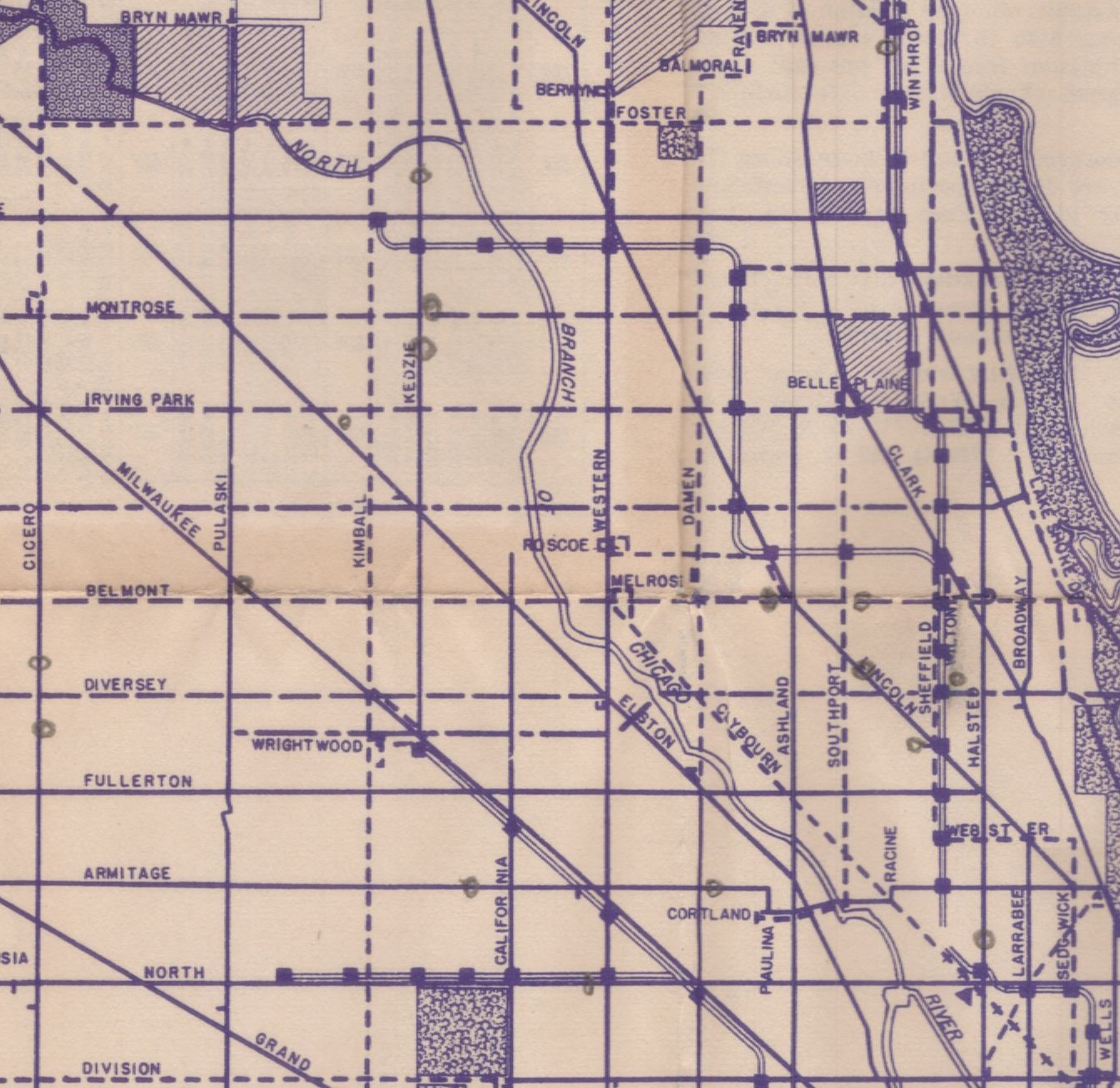
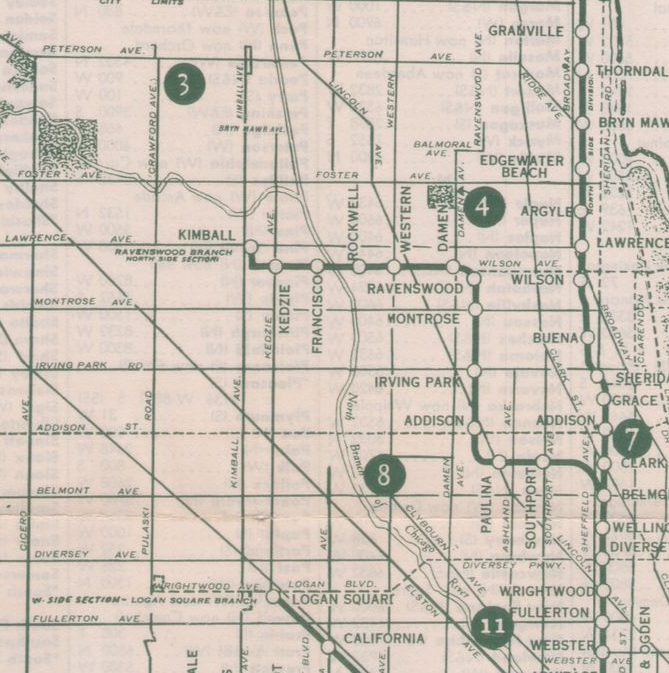
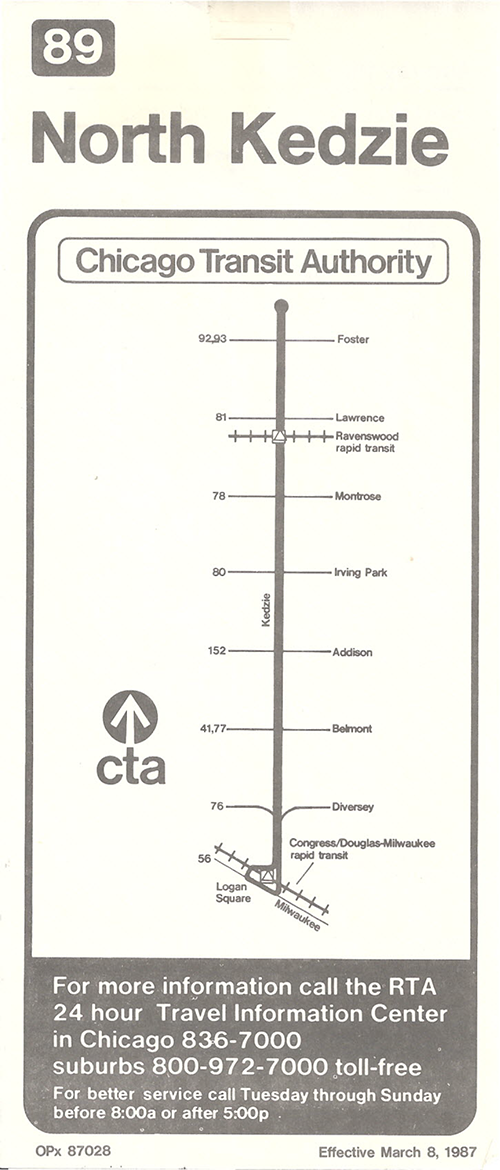
1949 Chicago Surface Lines Map showing the Kedzie Ave. Streetcar, 1961 map showing the North Kedzie bus service, 89 bus route map, all via the CTA Surface System History presented by the Illinois Railway Museum
Finding photos was a struggle, so I was very pleased with myself when I realized the building was visible in the background from North Park's former tennis courts.
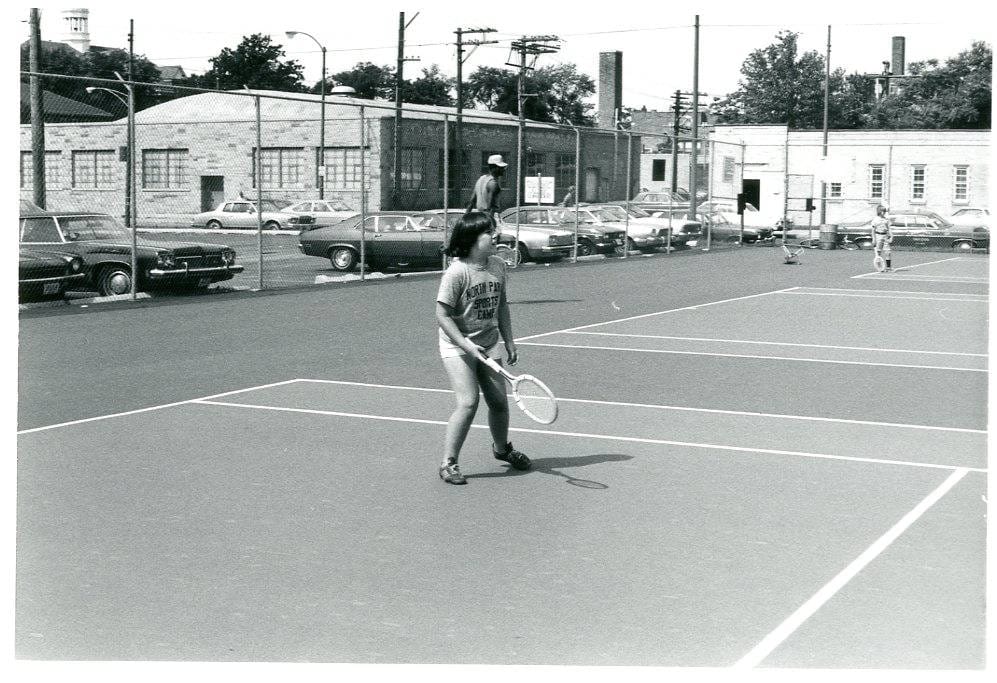
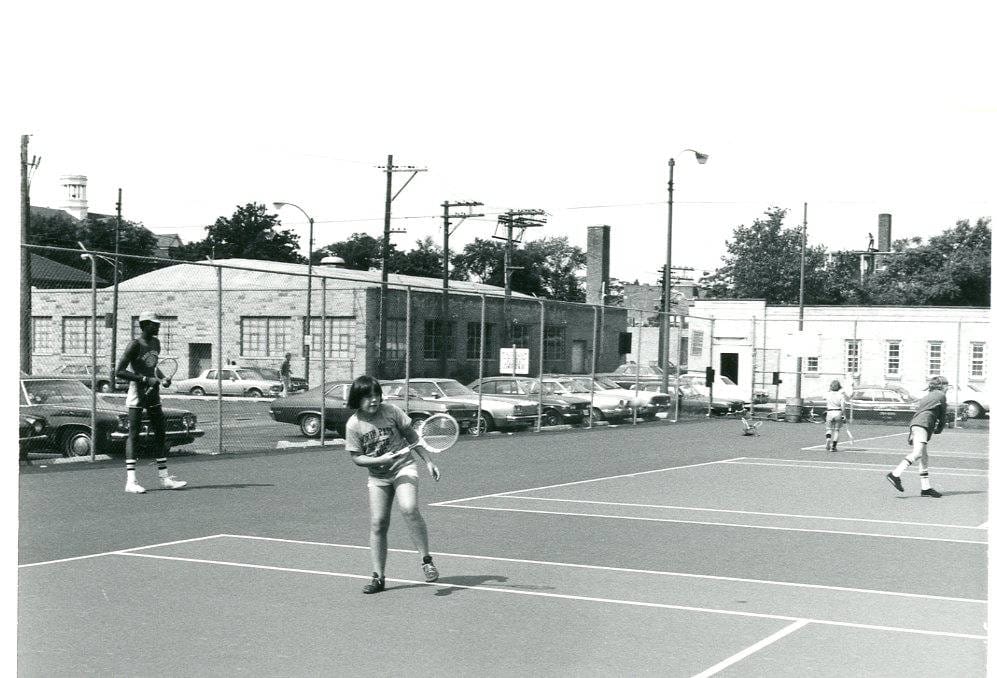
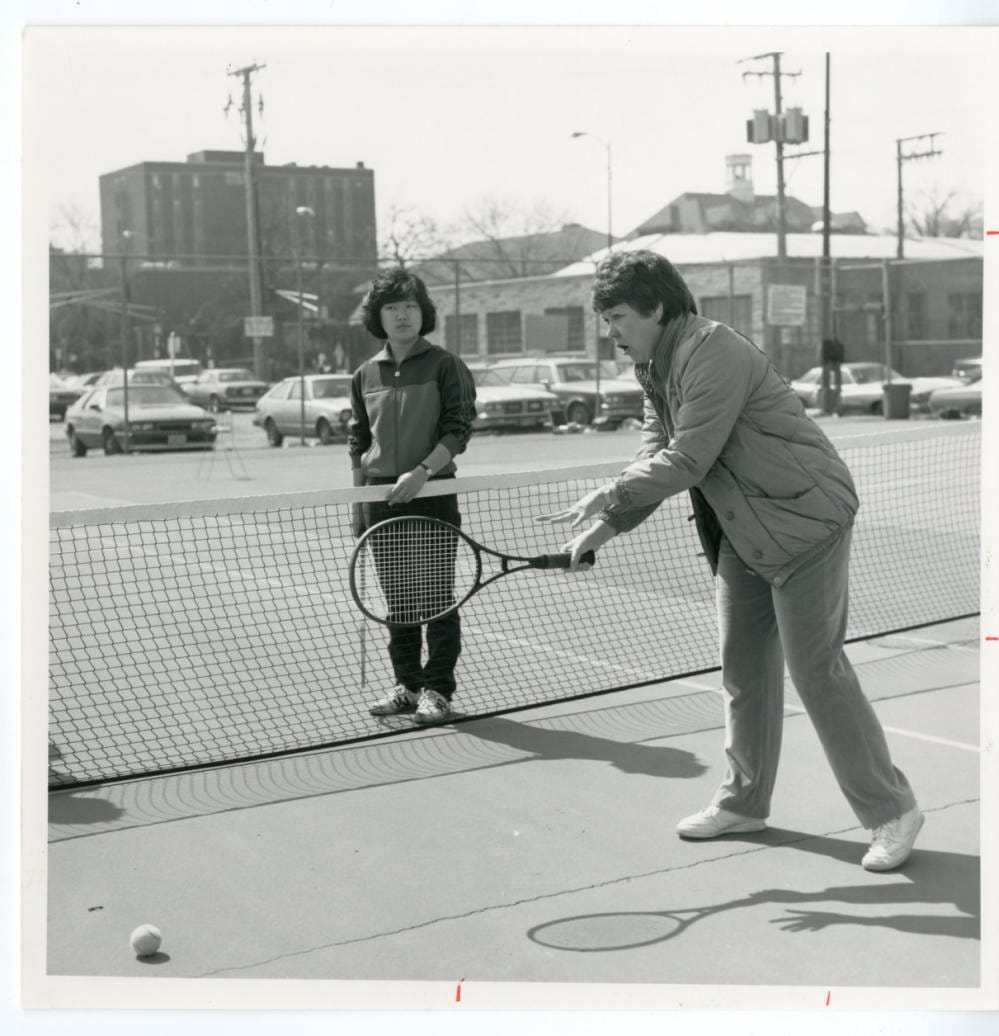
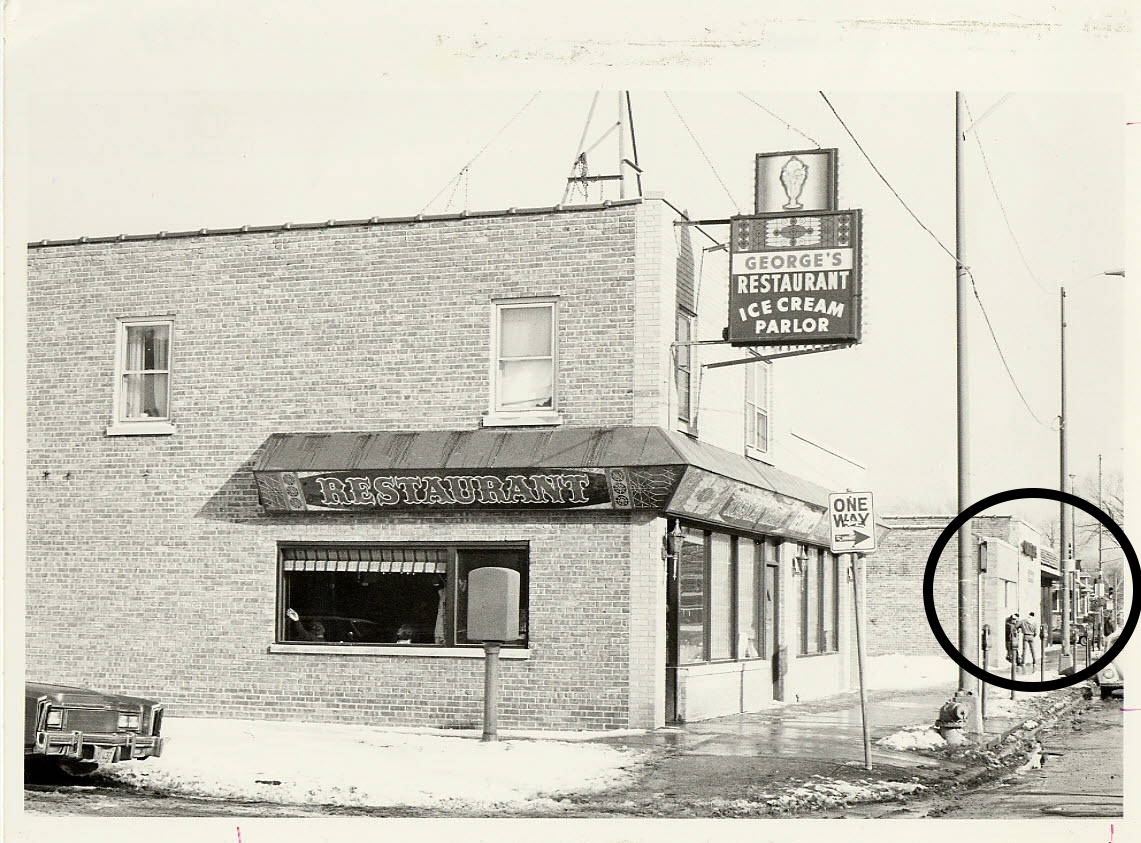
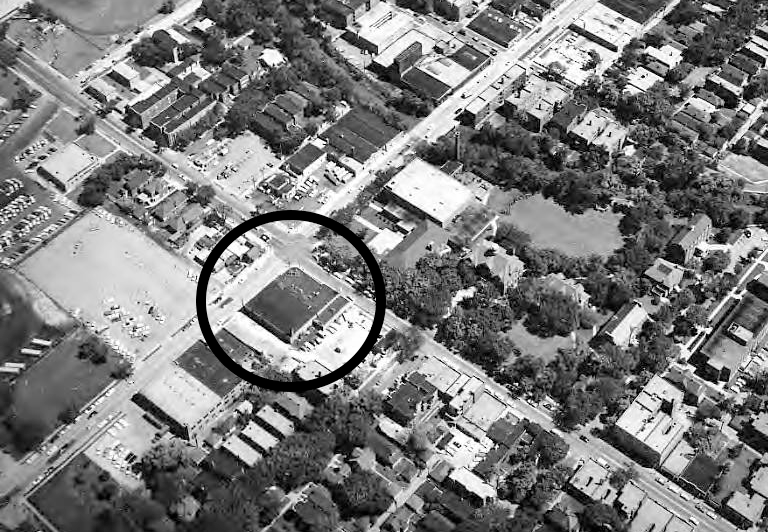
1978 tennis camp photos, CAHL_06662 and CAHL_06660, North Park University | 1985 tennis photo, CAHL_27767, North Park University | Undated photo of George's Restaurant on Foster with 3200 W. Foster in the background, CAHL_13077, North Park University | 1960 aerial, CAHL_13099, North Park University
Kenron's move from the North Side to the suburbs, where they could easily assemble a large site consolidating their Chicago operations, was very common in the 1960s.
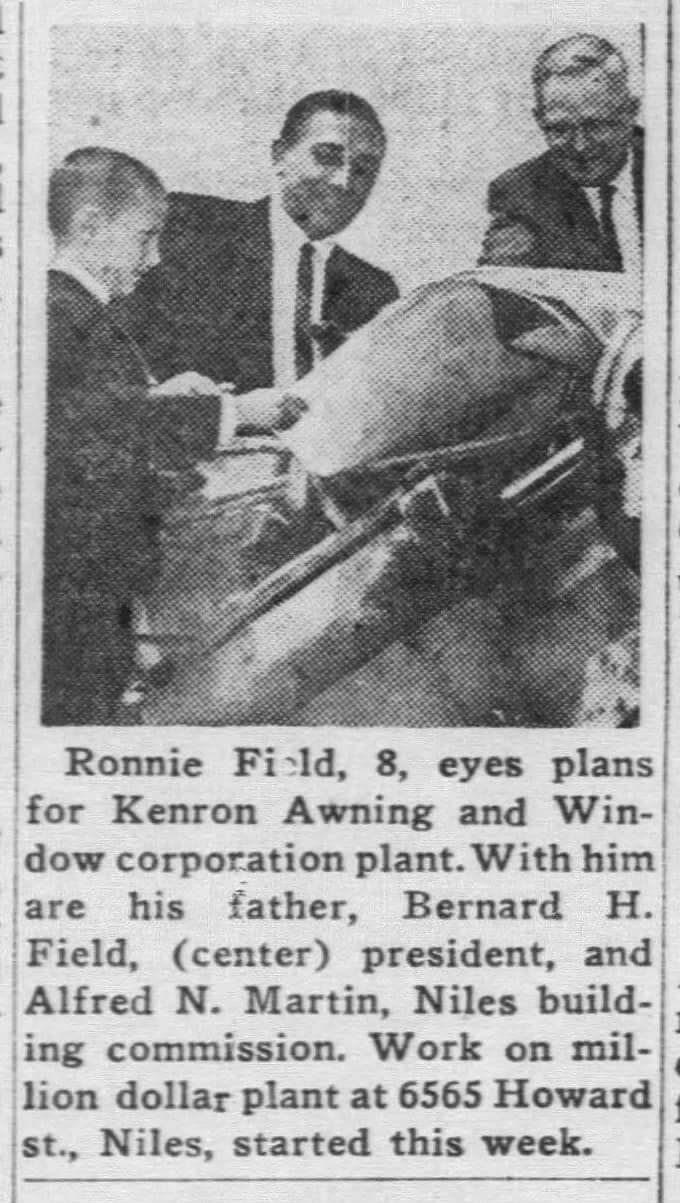
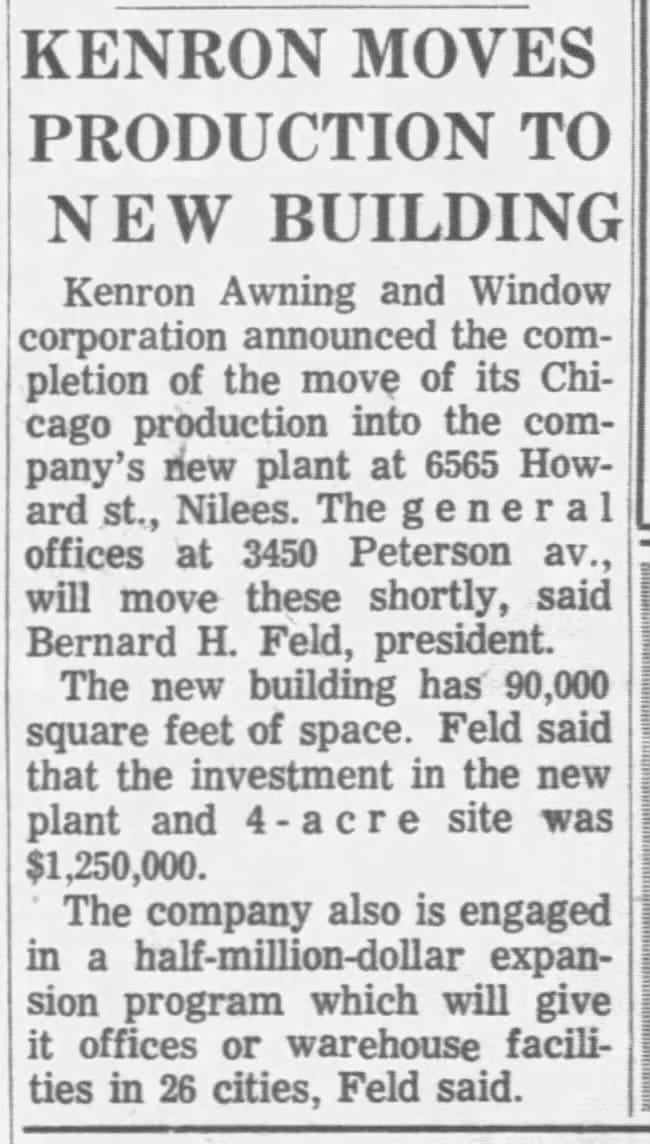
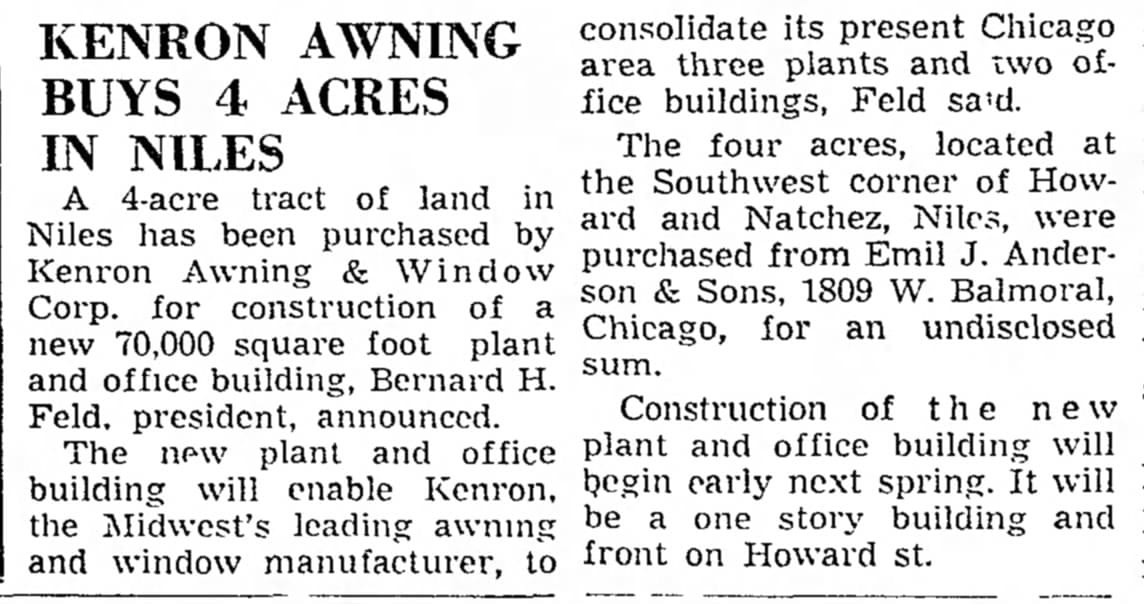
Various articles from the 1960s about Kenron moving to Niles
Various ads and help wanted ads from the 1950s and 1960s–the Kenron 'Help Wanted' ad for a Girl Friday made me laugh.


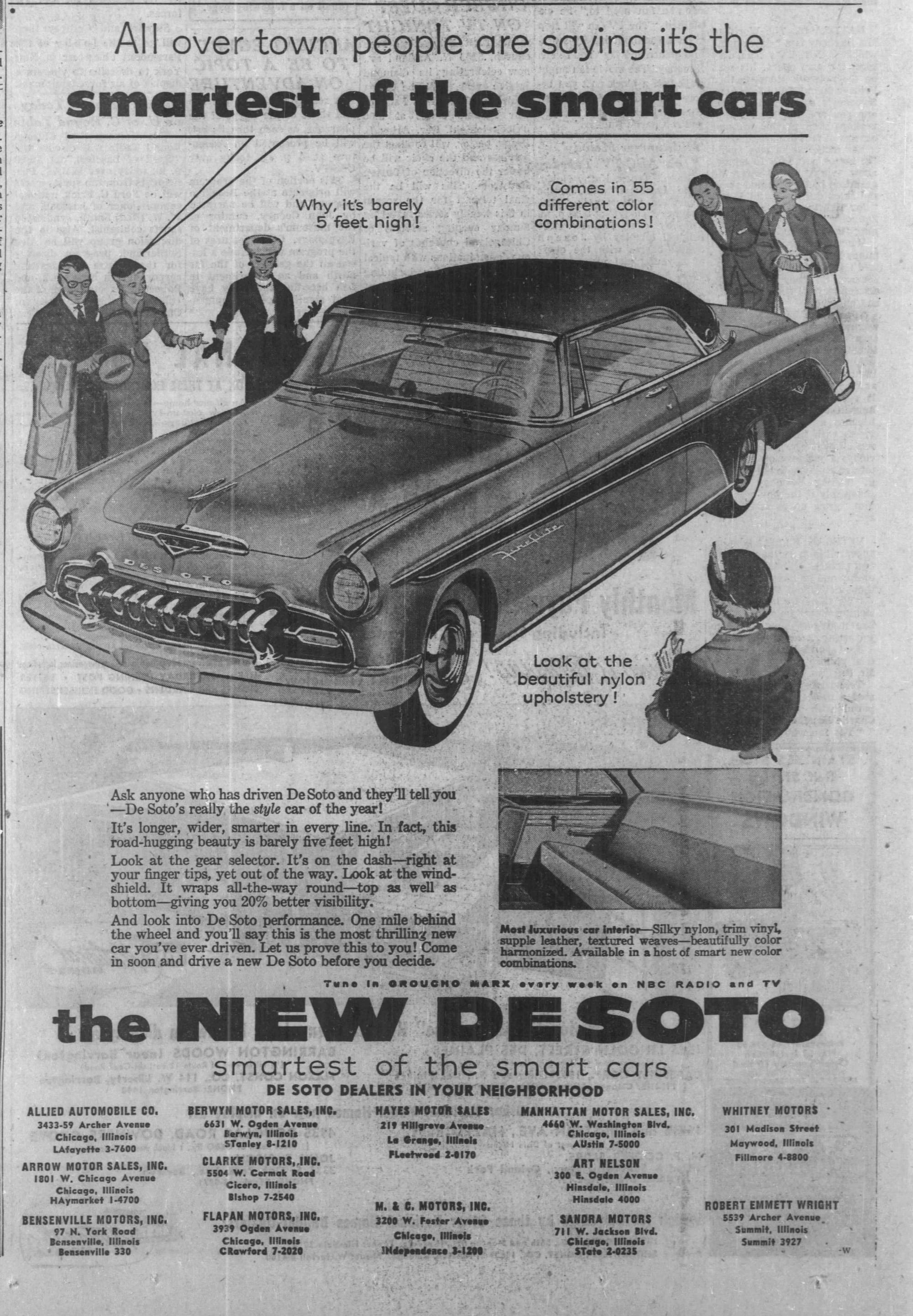
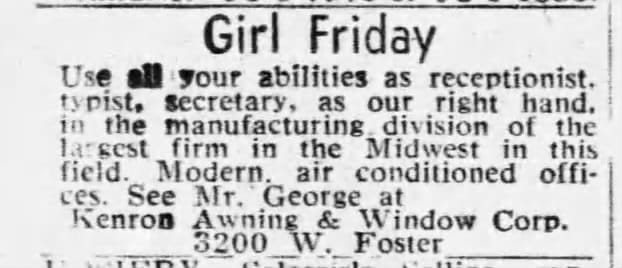
Help Wanted Ads and a DeSoto ad that all mention 3200 W. Foster
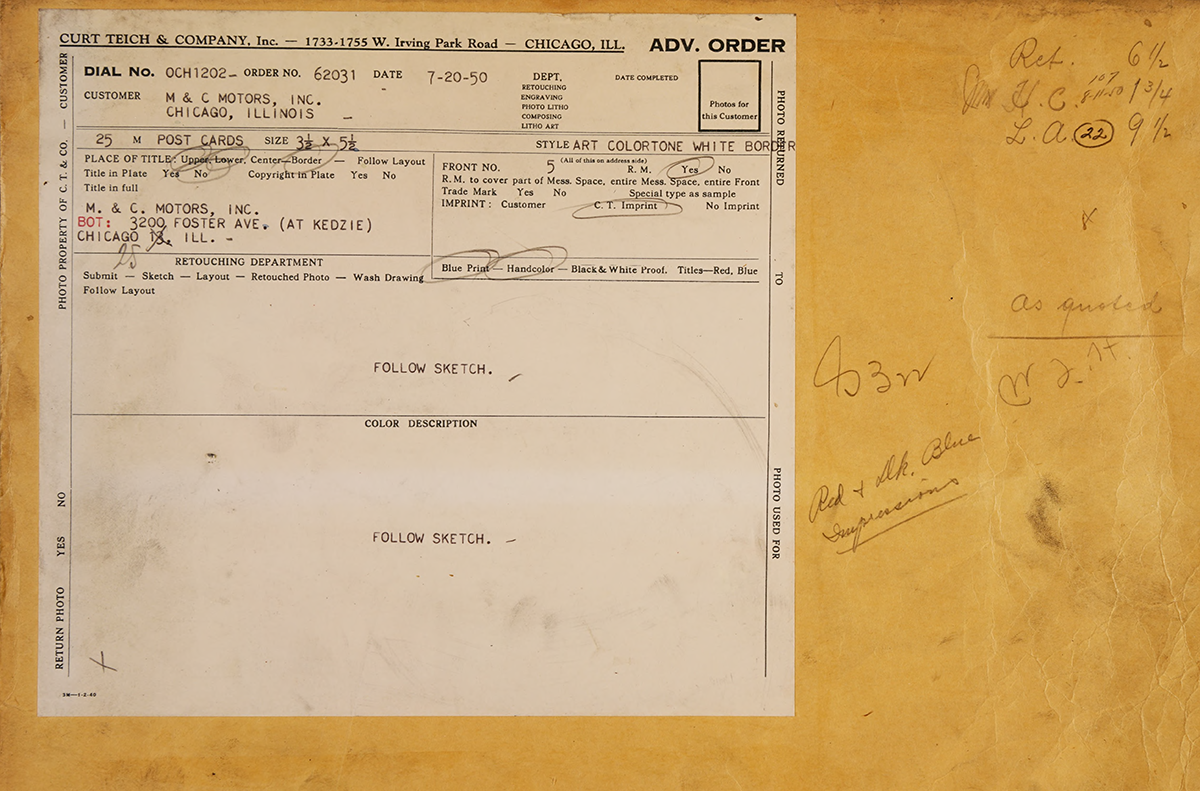
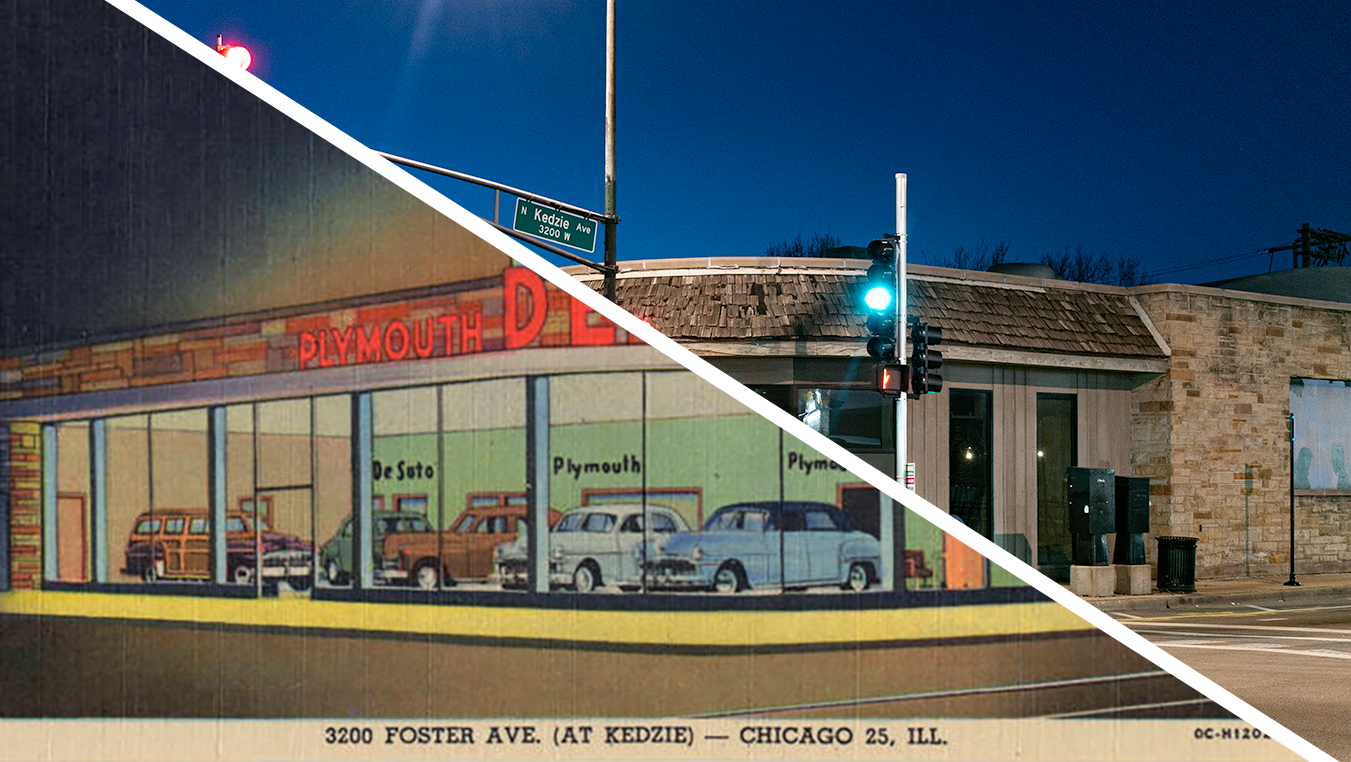
Member discussion: